The Pharmacology department conducts undergraduate medical, dental, nursing physiotherapy, and other paramedical allied courses via practical and theory classes. The department also trains the post graduate (M.D. Pharmacology) students. Since June 2015 the department has also initiated Ph.D Programme.
The department has facilities and infrastructure to fulfil the objectives of the course as per the Rajiv Gandhi University of health sciences and National Medical Council. The students have the opportunity for a good amount of interaction with the faculty which helps them understand their subjects better. Also, interested students take up short academic projects funded by ICMR and RGUHS under the mentorship of faculties. Skills are imparted through computer assisted learning, simulations, and interactive sessions.
The faculty and the post graduates are involved in research activities in addition to teaching. They participate in various national and international conferences and have published papers.
The Department also runs the Pharmacovigilance unit (Adverse drug reaction monitoring centre, AMC) which is recognized by the Pharmacovigilance Programme of India (PVPI) under Indian Pharmacopoeia Commission and WHO.
The department is also actively involved in NABH management of medication of Vydehi hospital. They are involved in monthly prescription audits, and training of hospital staffs in areas related to management of medication as part of Pharmacy & Therapeutic Committee (P&T) of the Vydehi hospital.
The department also has pre-clinical facilities for animal studies, under the supervision of CCSEA.
The department hosts the yearly webinar series “PHARMAQUEST”, and publishes the newsletter “PharmAcNews”.During the event, undergraduates participate in pharmacology concept maps “Pharmacology on a chart”. The best team is awarded Col. Dr B.N Chopra award.
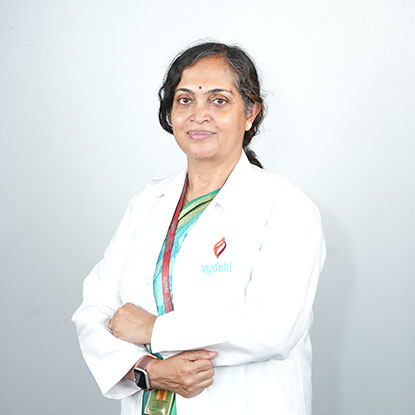
Professor & HOD
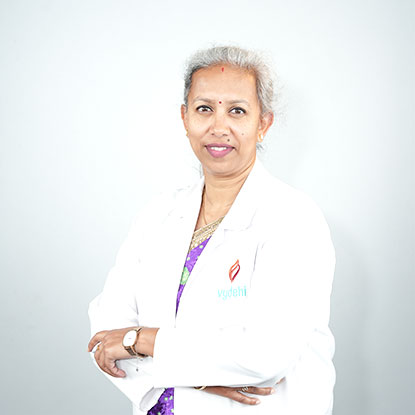
Professor
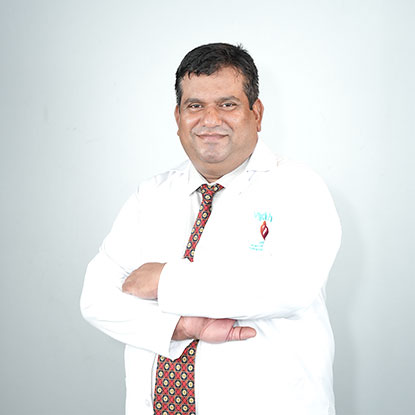
Associate Professor
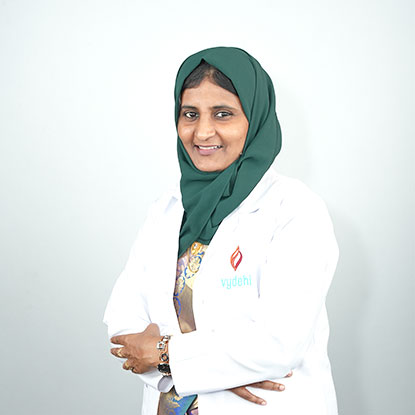
Associate Professor
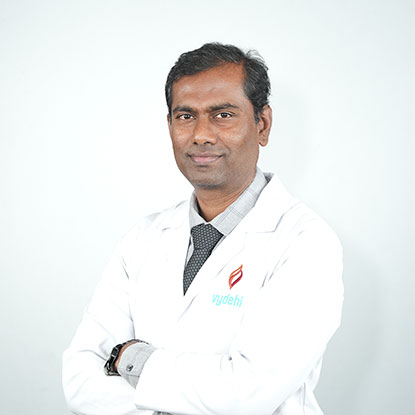
Assistant professor
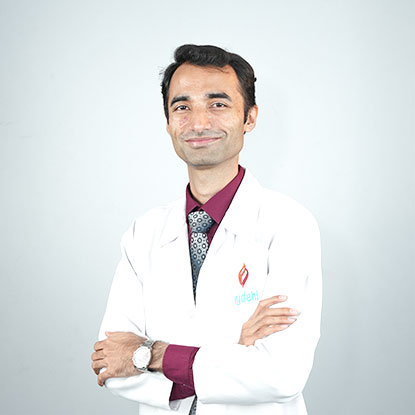
Assistant professor
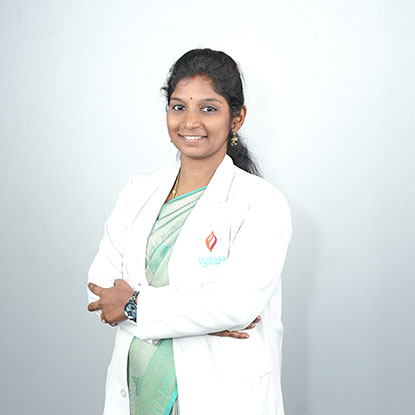
Assistant professor
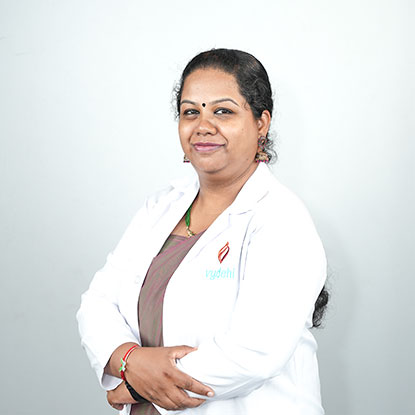
Senior Resident
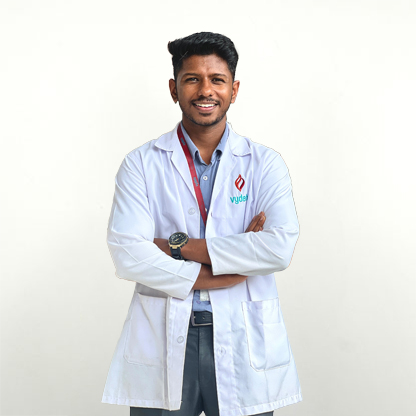
Senior Resident
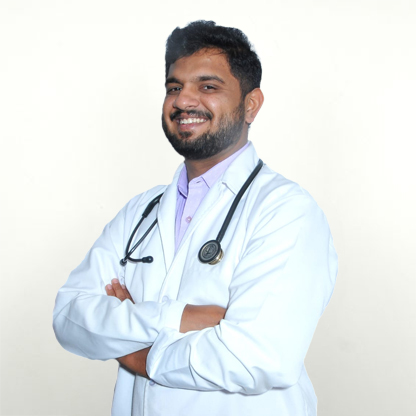
Tutor
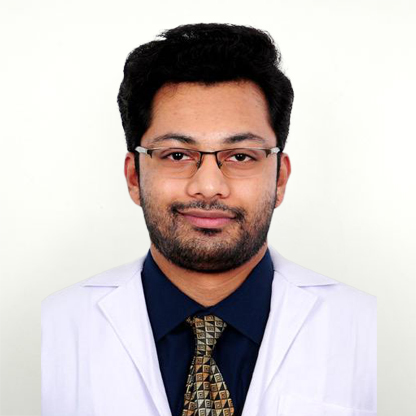
Tutor
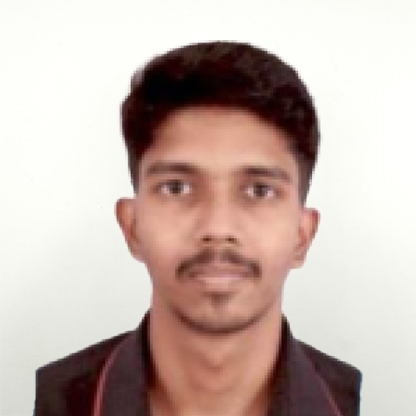
Tutor
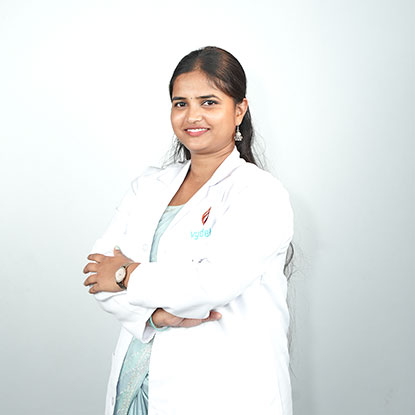
Tutor
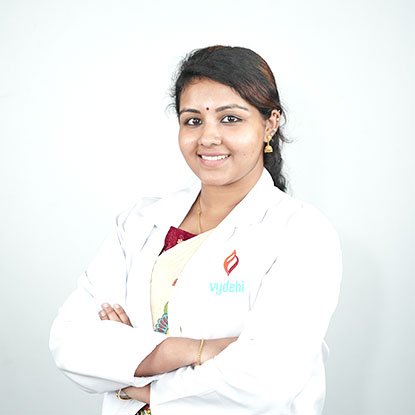
Tutor
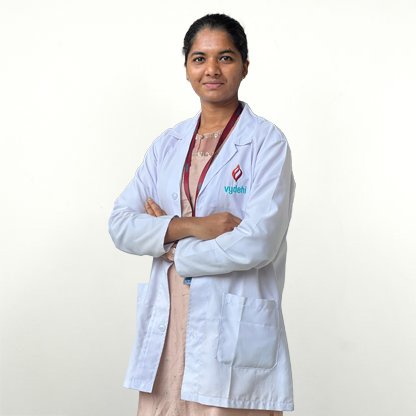
Tutor
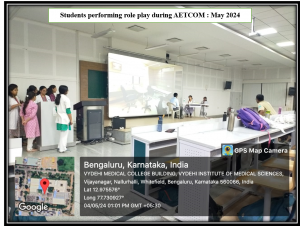 Students are taught various parenteral routes of drug administration by practicing on mannequins at Vydehi Advanced Simulation Academy (VASA). The students of final year also come to the department for electives posting for gaining knowledge in clinical research and pharmacokinetics are explained to them.
Students are taught various parenteral routes of drug administration by practicing on mannequins at Vydehi Advanced Simulation Academy (VASA). The students of final year also come to the department for electives posting for gaining knowledge in clinical research and pharmacokinetics are explained to them.
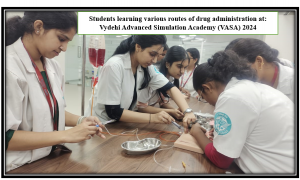 Post graduate teaching
Post-graduate teaching is through seminars, journal clubs, case-discussion, animal experiments and clinical case discussions. They are also encouraged to participate in undergraduate teaching. They are motivated to participate in various workshops, CMEs and to present papers in conferences, and graduate with publications.
Faculty development
The faculty are qualified postgraduates with rich experience in teaching and research. They are encouraged to carry out research projects every year. There is a continuous training for the faculty on medical education technology to keep them abreast of the newer technology in teaching. Every faculty also mentors a small group of undergraduate students. They are in review boards of various journals, and also have exposure in RGUHS in various capacities.
Departmental library
The department has a separate library, measuring 30sq.m with the sitting capacity of 20 members. It has a collection of 180 books, of recent editions. It also has national and international journals.
Departmental Museum
The departmental museum is a part of central museum having an area of 125sq.m. The drug samples are classified and arranged system wise. There are around 150 drug samples including crude drugs and 60 catalogues which are available for student reference. It is also provided with 42 charts, 12 photographs and also separate section depicting the history of medicine.
Laboratories
The department experimental laboratory, which covers 320 square meters, can accommodate 150 students at a time. There are 26 computers installed where students are equipped with computer based learning. The clinical pharmacology and pharmacy laboratory is a 256 square meter facility equipped with advanced equipment’s like Rotarod apparatus, Analgesiometer, isolated organ bath, act photometer, electroconvulsiometer, Hebbs William maze, Spectrophotometer etc.
The Post Graduate Research Centre lab sprawls over 72 square meters and is equipped with a Student Organ Bath, bench kymograph, hot air oven and an incubator, spectrophotometer, Hebb’s William’s maze, Shuttle box, Open field apparatus, Physiograph, Eddy’s hot plate, open field apparatus, incubator, centrifuge, etc.
Post graduate teaching
Post-graduate teaching is through seminars, journal clubs, case-discussion, animal experiments and clinical case discussions. They are also encouraged to participate in undergraduate teaching. They are motivated to participate in various workshops, CMEs and to present papers in conferences, and graduate with publications.
Faculty development
The faculty are qualified postgraduates with rich experience in teaching and research. They are encouraged to carry out research projects every year. There is a continuous training for the faculty on medical education technology to keep them abreast of the newer technology in teaching. Every faculty also mentors a small group of undergraduate students. They are in review boards of various journals, and also have exposure in RGUHS in various capacities.
Departmental library
The department has a separate library, measuring 30sq.m with the sitting capacity of 20 members. It has a collection of 180 books, of recent editions. It also has national and international journals.
Departmental Museum
The departmental museum is a part of central museum having an area of 125sq.m. The drug samples are classified and arranged system wise. There are around 150 drug samples including crude drugs and 60 catalogues which are available for student reference. It is also provided with 42 charts, 12 photographs and also separate section depicting the history of medicine.
Laboratories
The department experimental laboratory, which covers 320 square meters, can accommodate 150 students at a time. There are 26 computers installed where students are equipped with computer based learning. The clinical pharmacology and pharmacy laboratory is a 256 square meter facility equipped with advanced equipment’s like Rotarod apparatus, Analgesiometer, isolated organ bath, act photometer, electroconvulsiometer, Hebbs William maze, Spectrophotometer etc.
The Post Graduate Research Centre lab sprawls over 72 square meters and is equipped with a Student Organ Bath, bench kymograph, hot air oven and an incubator, spectrophotometer, Hebb’s William’s maze, Shuttle box, Open field apparatus, Physiograph, Eddy’s hot plate, open field apparatus, incubator, centrifuge, etc.
| Name of the Equipments |
|---|
| 1. BACTERIOLOGICAL INCUBATOR |
| 2. AUTOMATIC ELECTRIC RECORDING DRUMS |
| 3. HIGH POWER CENTRIFUGE FOR SEROLOGICAL AND ELECTRICAL WORKS |
| 4. ANALGESIOMETER |
| 5. ANIMAL WEIGHING MACHINE FOR SMALL ANIMALS LIKE RATS AND MICE |
| 6. FROG BOARDS |
| 7. STARLINGS HEART LEVER |
| 8. DISSECTION INSTRUMENTS |
| 9. STOP CLOCK |
| 10. PORCELEIN DISHES5” SIZES |
| 11. CRUCIBLE WITH TONGS |
| 12. IRON SPATULA |
| 13. MEASURING GLASSES (10 ml, 25ml, 100ml) |
| 14. ELECTRONIC STIMULATORS |
| 15. HOMOGENISER |
| 16. MAGNETIC STIRRER WITH HOT PLATE |
| 17. HOT AIR OVEN |
| 18. ACTOPHOTOMETER |
| 19. ELECTRO CONVULSIOMETER |
| 20. COOK’S POLE CLIMBING APPARATUS |
| 21. DIGITAL pH METER |
| 22. TABLET DISINTEGRATION MACHINE FILLED WITH HEAVY DUTY MOTOR |
| 23. SIX TUBE BASKET AND BOROSIL BEAKER |
| 24. MAGNIFYING GLASS |
| 25. DESSICATOR |
| 26. REMI CENTRIFUGE TUBES |
| 27. AUTO CLAVE |
| 28. DIGITAL SPECTRO PHOTOMETER |
| 29. STERLISER |
| 30. CHEMICAL BALANCES |
| 31. GRAM WEIGHT BOXES |
| 32. WATER BATH |
| 33. BAROMETER |
| 34. CONDONS DROP RECORDER |
| 35. X- BLOCK STANDARD |
| 36. LONG PAPER EXTENSION |
| 37. HOOK GRIPS |
| 38. OPEN SIDED X BLOCKS |
| 39. SPARES FOR RABBIT INTESTINAL BATH |
| 40. ORGAN TUBES |
| 8 FOR 4 UNIT BATH |
| 2 FOR RABBIT INTESTINAL BATH |
| 41. AERATION TUBES |
| 2 FOR RABBIT INTESTINAL BATH |
| 8 FOR UNIT BATH |
| 42. VORTEX MIXER |
| 43. ISOLATED RABBIT INTESTINAL BATH |
| 44. 4 UNIT BATH |
| 45. PILL TILES |
| 46. ASSEMBLY FOR DOG EXPT- |
| 47. PEAK NASAL FLOW METER |
| 48. ROTA ROD ASSEMBY |
| 49. DIGITAL PHOTOCOLORIMETER |
| 50. AIR PUMP (electrically operated) |
| 51.Hebb’s William’s Maze |
| 52.Physiograph |
| 53.Eddy’s hot plate |
| 54.Open field apparatus |
| 55.Shuttle box |
| Sl No | Name and authorship | Title | National/ state | Indexing | Citation | Year |
|---|---|---|---|---|---|---|
| 1. | Dr.Ananya Chakraborty (3rd author) | Evaluation of the Metered Dose Inhaler Technique: Initial Assessment and Post-counseling Improvements Among the Indian Population. | International | Pubmed | A S, Haward R, Chakraborty A. Evaluation of the Metered Dose Inhaler Technique: Initial Assessment and Post-counseling Improvements Among the Indian Population. Cureus. 2024 Apr 1;16(4),1-10: e57397. doi:10.7759/cureus.57397. PMID:38694667;PMCID: PMC11062477. | 2024 |
| 2. | Dr.Ananya Chakraborty (3rd author) | Learner’s perspectives and outcomes of peer role play as a teaching learning method for prescription communication skills in second year medical students at a tertiary teaching hospital in India | International | Index Copernicus | Asanaliyar M, Kamath L, Chakraborty A. Learner’s perspectives and outcomes of peer role play as a teaching learning method for prescription communication skills in second year medical students at a tertiary teaching hospital in India. Int J Basic Clin Pharmacol 2024;13:233-8. | 2024 |
| 3. | Dr.Kevin M Salis (3rd author) | A botanical extract blend of Mangifera indica and Sphaeranthus indicus combined with resistance exercise training improves muscle strength and endurance over exercise alone in young men: a rondomized,blinded,placebo – controlled trial. | International | Pubmed | Salter D, Swamy S, Salis KM, Deep DK and Nadig P. A botanical extract blend of Mangifera indica and Sphaeranthus indicus combined with resistance exercise training improves muscle strength and endurance over exercise alone in young men: a randomized, blinded,placebo-controlled trial.Front.Nutr2024;11:11:1393917.doi: 10.3389/fnut.2024.1393917 | 2024 |
| 4. | Dr.Shubhatara Swamy (2nd author) | A botanical extract blend of Mangifera indica and Sphaeranthus indicus combined with resistance exercise training improves muscle strength and endurance over exercise alone in young men: a rondomized,blinded,placebo – controlled trial. | International | Pubmed | Salter D, Swamy S, Salis KM, Deep DK and Nadig P. A botanical extract blend of Mangifera indica and Sphaeranthus indicus combined with resistance exercise training improves muscle strength and endurance over exercise alone in young men: a randomized, blinded,placebo-controlled trial.Front.Nutr2024;11:11:1393917.doi: 10.3389/fnut.2024.1393917 | 2024 |
| 5. | Dr.Meharban A (1st author) | Learner’s perspectives and outcomes of peer role play as a teaching learning method for prescription communication skills in second year medical students at a tertiary teaching hospital in India | International | Index Copernicus | Asanaliyar M, Kamath L, Chakraborty A. Learner’s perspectives and outcomes of peer role play as a teaching learning method for prescription communication skills in second year medical students at a tertiary teaching hospital in India. Int J Basic Clin Pharmacol 2024;13:233-8. | 2024 |
| 6. | Dr.Latha Kamath (2nd author) | Learner’s perspectives and outcomes of peer role play as a teaching learning method for prescription communication skills in second year medical students at a tertiary teaching hospital in India | International | Index Copernicus | Asanaliyar M, Kamath L, Chakraborty A. Learner’s perspectives and outcomes of peer role play as a teaching learning method for prescription communication skills in second year medical students at a tertiary teaching hospital in India. Int J Basic Clin Pharmacol 2024;13:233-8. | 2024 |
| 7. | Dr.Ananya Chakraborty (2nd author) | Utilization of Hypolipidemic Drugs, Patterns, and Factors Affecting Dyslipidemia Among Type 2 Diabetes Mellitus at a Tertiary Care Teaching Hospital in South India | International | Pubmed | Khot S, Chakraborty A, Vijaykumar S. Utilization of Hypolipidemic Drugs, Patterns, and Factors Affecting Dyslipidemia Among Type 2 Diabetes Mellitus at a Tertiary Care Teaching Hospital in South India. Cureus 2023; 15(2): e34748. DOI 10.7759/cureus.34748. PMID 36909102. | 2023 |
| 8. | Dr.Ananya Chakraborty (1st author) | Learner’s perspectives on competency-based medical education in pharmacology at a tertiary care teaching hospital in South India. | International | Google scholar | Chakraborty A., Asanaliyar M., & Kamath L. Learner’s perspectives on competency-based medical education in pharmacology at a tertiary care teaching hospital in South India. International Journal of Basic & Clinical Pharmacology, 2023;12(1), 64–69. https://doi.org/10.18203/2319-2003.ijbcp20223356 | 2023 |
| 9. | Dr.Meharban A (2nd author) | Learner’s perspectives on competency-based medical education in pharmacology at a tertiary care teaching hospital in South India. | International | Google scholar | Chakraborty A., Asanaliyar M., & Kamath L. Learner’s perspectives on competency-based medical education in pharmacology at a tertiary care teaching hospital in South India. International Journal of Basic & Clinical Pharmacology, 2023;12(1), 64–69. https://doi.org/10.18203/2319-2003.ijbcp20223356 | 2023 |
| 10. | Dr.Latha Kamath (3rd author) | Learner’s perspectives on competency-based medical education in pharmacology at a tertiary care teaching hospital in South India. | International | Google scholar | Chakraborty A., Asanaliyar M., & Kamath L. Learner’s perspectives on competency-based medical education in pharmacology at a tertiary care teaching hospital in South India. International Journal of Basic & Clinical Pharmacology, 2023;12(1), 64–69. https://doi.org/10.18203/2319-2003.ijbcp20223356 | 2023 |
| 11. | Dr.Deepak KR (3rd author) | A comparative study of efficacy and safety of intralesional triamcinolone with intralesional verapamil in the treatment of keloid and hypertrophic scar at a tertiary care hospital | International | Index Copernicus | Raghav MV, Geetha A, Deepak KR, Revathi TN. A comparative study of efficacy and safety of intralesional triamcinolone with intralesional verapamil in the treatment of keloid and hypertrophic scar at a tertiary care hospital.Curr Trends Pharma Clinical Trials 2023;6 (2):180061 | 2023 |
| 12. | Dr.Nandhini Saravanabavan (3rd author) | Medication Adherence using Medication Possession ratio and proportion of days covered among elderly diabetic patients visiting a tertiary care hospital in Puducherry | International | Scopus | Prabhu K, Salwe K.J, Saravanabavan N, Manimekalai K. Medication Adherence using Medication Possession ratio and proportion of days covered among elderly diabetic patients visiting a tertiary care hospital in Puducherry. Biomed Pharmacol J 2023;16(1) | 2023 |
| 13. | Dr.Ananya Chakraborty (1st author) | Adverse Events Following COVID-19 Vaccination in Selected Apartments in Bangalore, India | International | Pubmed | Chakraborty A, Reval N, Kamath L. Adverse Events Following COVID-19 Vaccination in Selected Apartments in Bangalore, India. Cureus. 2022 Feb 1;14(2):e21809. doi: 10.7759/cureus.21809. PMID: 35291520. | 2022 |
| 14. | Dr.Latha Kamath (3rd author) | Adverse Events Following COVID-19 Vaccination in Selected Apartments in Bangalore, India | International | Pubmed | Chakraborty A, Reval N, Kamath L. Adverse Events Following COVID-19 Vaccination in Selected Apartments in Bangalore, India. Cureus. 2022 Feb 1;14(2):e21809. doi: 10.7759/cureus.21809. PMID: 35291520. | 2022 |
| 15. | Dr.Ananya Chakraborty (2nd author) | Efficacy and safety of gabapentin and pregabalin in chemotherapy-induced peripheral neuropathy | International | Google scholar | Prasad M, Chakraborty A, Sashidhar V. Efficacy and safety of gabapentin and pregabalin in chemotherapy-induced peripheral neuropathy. Asian J Pharma and Clin Res 2021;14(1): 130-2. | 2021 |
| 16. | Dr.Ananya Chakraborty (3rd author) | Well-being and perspective of second year MBBS students on online pharmacology classes held during COVID-19 pandemic in a tertiary care teaching hospital. | International | Index Copernicus | Kamath L, Nishith RS, Chakraborty A. Well-being and perspective of second year MBBS students on online pharmacology classes held during COVID-19 pandemic in a tertiary care teaching hospital. Int J Basic Clin Pharmacol 2021;10:1276-81. | 2021 |
| 17. | Dr.Ananya Chakraborty (2nd author) | Adr In Journals: Are They Translated Into Regulatory Frameworks? | International | Pubmed | Kolupoti A, Chakraborty A, Shahistha K. Adr In Journals: Are They Translated Into Regulatory Frameworks? Curr Drug Saf. 2021;9: 1-6. PMID: 34151768. | 2021 |
| 18. | Dr.Ananya Chakraborty (3rd author) | Well-being and perspective of second year MBBS students on online pharmacology classes held during COVID-19 pandemic in a tertiary care teaching hospital. | International | Index Copernicus | Kamath L, Nishith RS, Chakraborty A. Well-being and perspective of second year MBBS students on online pharmacology classes held during COVID-19 pandemic in a tertiary care teaching hospital. Int J Basic Clin Pharmacol 2021;10:1276-81. | 2021 |
| 19. | Dr.Kevin M Salis (3rd author) | Establishment of long-term high-fat diet and low dose streptozotocin-induced experimental type-2 diabetes mellitus model of insulin resistance and evaluation of seed extracts of Syzygium cumini. | International | Scopus | Asanaliyar M, Nadig P, Salis KM. Establishment of long-term high-fat diet and low dose streptozotocin-induced experimental type-2 diabetes mellitus model of insulin resistance and evaluation of seed extracts of Syzygium cumini. J Herbmed Pharmacol 2021;10(3):331-338. | 2021 |
| 20. | Dr.Meharban A (1st author) | Establishment of long-term high-fat diet and low dose streptozotocin-induced experimental type-2 diabetes mellitus model of insulin resistance and evaluation of seed extracts of Syzygium cumini. | International | Scopus | Asanaliyar M, Nadig P, Salis KM. Establishment of long-term high-fat diet and low dose streptozotocin-induced experimental type-2 diabetes mellitus model of insulin resistance and evaluation of seed extracts of Syzygium cumini. J Herbmed Pharmacol 2021;10(3):331-338. | 2021 |
| 21. | Dr.Meharban A (1st author) | In vivo antidiabetic activity of hydroethanolic seed extract of syzygium cumini. | International | Scopus | Asanaliyar M, Nadig P. In vivo antidiabetic activity of hydroethanolic seed extract of syzygium cumini. Biomed and Pharm J 2021;14(1):241-247. | 2021 |
| 22. | Dr.Meharban A (1st author) | In vitro anti diabetic activity bio active constituents and molecular modeling studies with sulfonylurea receptor1 for insulin secretagogue activity of seed extract of syzygium cumini | International | Scopus | Asanaliyar M, Nadig P, Bharatham N. In vitro anti diabetic activity bio active constituents and molecular modeling studies with sulfonylurea receptor1 for insulin secretagogue activity of seed extract of syzygium cumini. J Herbmed Pharmacol 2021;10(3):304-312. | 2021 |
| 23. | Dr.Ananya Chakraborty (3rd author) | Well-being and perspective of second year MBBS students on online pharmacology classes held during COVID-19 pandemic in a tertiary care teaching hospital. | International | Index Copernicus | Kamath L, Nishith RS, Chakraborty A. Well-being and perspective of second year MBBS students on online pharmacology classes held during COVID-19 pandemic in a tertiary care teaching hospital. Int J Basic Clin Pharmacol 2021;10:1276-81. | 2021 |
| 24. | Dr.Latha Kamath (1st author) | Well-being and perspective of second year MBBS students on online pharmacology classes held during COVID-19 pandemic in a tertiary care teaching hospital. | International | Index Copernicus | Kamath L, Nishith RS, Chakraborty A. Well-being and perspective of second year MBBS students on online pharmacology classes held during COVID-19 pandemic in a tertiary care teaching hospital. Int J Basic Clin Pharmacol 2021;10:1276-81. | 2021 |
| 25. | Dr.Kiran M (1st author) | Adverse Drug Reactions Monitoring in Patients on Antitubercular Treatment in Tertiary Care Hospital | International | Scopus | Kiran M, Nagabushan H. Adverse Drug Reactions Monitoring in Patients on Antitubercular Treatment in Tertiary Care Hospital. 2021; 14(2): 701-708 | 2021 |
| 26. | Dr.Nandhini Saravanabavan (1st author) | Irrational prescribing: myths and facts. | International | Google scholar | Saravanabavan N, Codi SR, Manimekalai K. Irrational prescribing: myths and facts. Int J Basic Clin Pharmacol 2021; 10(5):612-3. | 2021 |
Vydehi hospital is accredited by NABH. Hence, the medication safety parameters are documented as per NABH guidelines.
Vydehi ADR Monitoring Centre (AMC) is part of Pharmacovigilance program of India. We collect analyses and report adverse drug reactions of Vydehi hospital and nearby establishments as and when we receive them. ADR cases are reported through vigiflowTM provided by the Government of India.
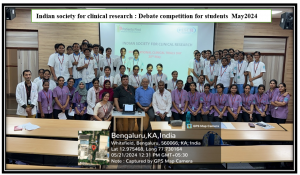
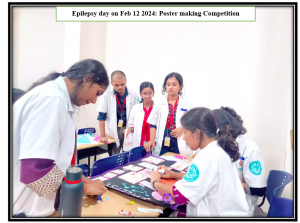
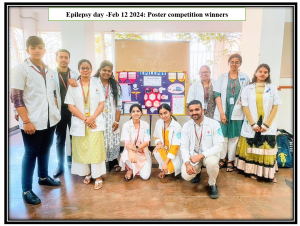
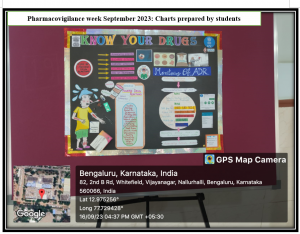
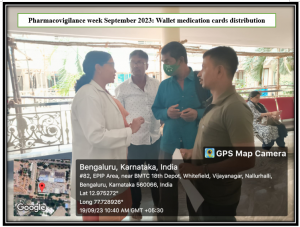
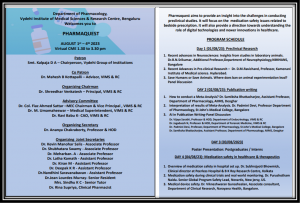
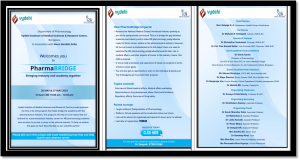
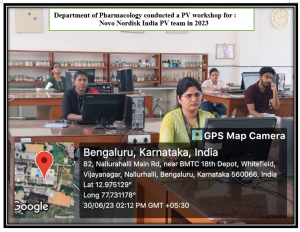
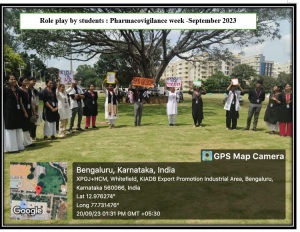
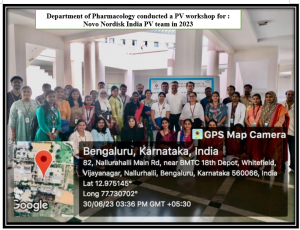
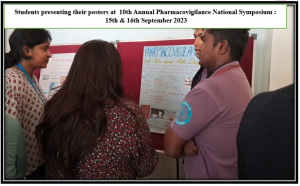
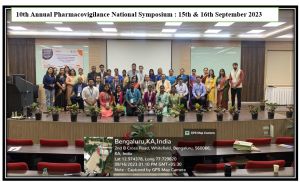
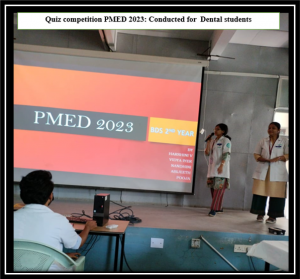
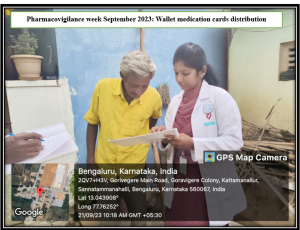
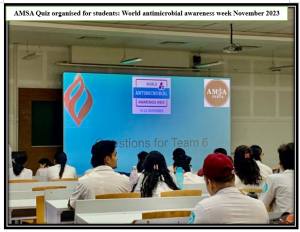
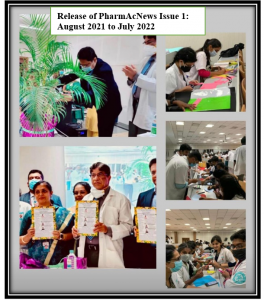
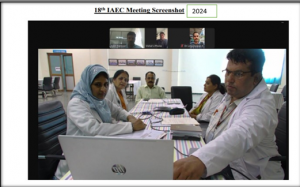
| Sl. NO. | Year of joining | Title | Student | Guide |
|---|---|---|---|---|
| 1. | 2009 | Role of Immunostimulant (Ismigen) in chronic obstructive pulmonary disease | Dr.Manjula Shetty | Dr.Pratibha. Nadig |
| 2. | 2009 | A comparative study of two antiemetic regimens in moderately emetogenic cancer chemotherapy. | Dr. Shubhatara Swamy | Dr.Vijaya Rajendran |
| 3. | 2010 | Experimental evaluation of Tinospora cordifolia on learning and Memory in albino rats. | Dr.Kiran Poojar | Dr.Pratibha Nadig |
| 4 | 2010 | A cross sectional study of prescribing pattern of Antimicrobials in a teaching hospital. | Dr.Jyotsnya | Dr.Vijaya Rajendran |
| 5. | 2011 | Comparative clinical study on efficacy and safety of controlled released morphine with immediate release morphine in cancer pain management | Dr.Kiran Roy | Dr.Pratibha. Nadig |
| 6. | 2011 | Role of n-acetyl cysteine in COPD patients | Dr.Pooja Roy | Dr. Srinivas B. N |
| 7. | 2011 | Experimental evaluation of the anti-ulcer activity of Grape (Vitis Vinifera) seed extract in wistar albino rats. | Dr. Anand M. Ingale | Dr. Vijaya Rajendran |
| 8. | 2011 | A Comparative Study of Probiotic Lactic acid bacilli alone and in combination with Bifidobacterium And Saccharomyces as adjuvants to Oral rehydration salt and Zinc in the management of acute Pediatric diarrhoea | Dr.Deepak | Dr. Ananya Chakraborty |
| 9. | 2012 | A comparitive study of the efficacy and safety of levetiracetam and carbamazepine in partial epilepsy | Dr.Swaroop | Dr. Ananya Chakraborty |
| 10. | 2012 | A placebo controlled clinical study of vitamin D as an adjuvant in the treatment of new cases of pulmonary tuberculosis | Dr.Sarah Jabeen | Dr. Srinivas B. N |
| 11. | 2012 | Adherance to medications in Type-II Diabetes mellitus patients and its correlation with glycemic control. | Dr.Divya | Dr.Pratibha. Nadig |
| 12 | 2012 | A comparative study of efficacy of Nadifloxacin with Clindamycin in the treatment of acne vulgaris. | Dr.Ramya | Dr. Vijaya Rajendran |
| 13. | 2013 | A comparative study of the efficacy and safety of Levocetrizine and Rupatadine in the treatment of chronic idiopathic urticarial | Dr.Sheela | Dr. Srinivas B. N |
| 14. | 2013 | A prospective comparative efficacy and safety study of Retapamulin and Mupirocin in Pyoderma | Dr.Ashwin | Dr. Vijaya Rajendran |
| 15. | 2013 | Comparitive study of efficacy and safety of Amytriptyline and Topiramate in migraine prophylaxsis | Dr.Kavitha | Dr. Ananya Chakraborty |
| 17. | 2014 | Randomised standard controlled study of Metformin and glimipiride in improving insulin sensitivity and beta cell function. | Dr.Brundashree | Dr.Pratibha. Nadig |
| 18. | 2014 | Prescription pattern of drugs in chronic kidney kidney disease with emphasis on antihypertensives. | Dr.Geetha | Dr Eippa Matthan Kovoor |
| 19. | 2014 | A comparitive study of the efficacy and safety of Pregabalin and Gabapentin in chemotherapy Induced neuropathic pain | Dr.Manju shree | Dr. Ananya Chakraborty |
| 20 | 2014 | A prospective clinical study on antimicrobial prescription pattern in patients with sepsis in Intensive care unit. | Dr.Rakshita | Dr. Vijaya Rajendran |
| 21 | 2015 | Identifying potential drug interactions in chronic kidney disease patients. | Dr. Rajshree | Dr. Eippa |
| 22 | 2015 | Administration technique, adherence to inhaled medications, And quality of life in patients with Bronchial Asthma. | Dr. Neha Deep | Dr. Ananya Chakraborty |
| 23 | 2015 | A Prospective study of Adverse Drug Reactions of Cephalosporins | Dr.Swetha Varahireddy | Dr.Pratibha Nadig |
| 24 | 2016 | A comparative study of the efficacy and safety of Olanzapine and aprepitant regimens in highly emetogenic chemotherapy | Dr Prasad M | Dr Ananya Chakraborty |
| 25 | 2016 | A comparative study on the efficacy and safety of Teneligliptin vs. Glimepiride as add-on therapy to metformin monotherapy in patients with Type-2 Diabetes Mellitus | Dr Shivam S | Dr. Pratibha Nadig |
| 26 | 2016 | A comparison of the efficacy and safety of Acenocoumarol and Warfarin in Valve-replaced patients with rheumatic heart disease | Dr Indranil Ray | Dr Eippa Matthan Kovoor |
| 27 | 2018 | A comparative study of the safety and efficacy of Bepotastine and Fexofenadine in Chronic Idiopathic Urticaria | Dr Annapurna K | Dr Ananya Chakraborty |
| 28 | 2020 | Pattern of drug utilization and factors affecting glycemic control in patients with type 2 diabetes mellitus | Dr Sandeep Khot | Dr Ananya Chakraborty |
| S.no. | Year of application | Title of the project |
|---|---|---|
| 1. | 2010 | Evaluation of Tinospora cordifolia in experimental diabetic neuropathy Student:Roshni Revankar Guide:Pratibha Nadig |
| 2. | 2012 | Factors contributing towards poor asthma control in patients on regular medication Student:Siddharth Gosavi Guide:Dr.Pratibha Nadig |
| 3. | 2013 | Effect of Tinospora Cordifolia on atherogenic index in Type-2 diabetes Student:Vikram Sarangam Guide:Dr.Pratibha Nadig |
| 4. | 2013 | Adherance to treatment and quality of life in patients with epilepsy Student:Monalisa Sahu Guide:Dr.Ananya Chakraborty |
| 5. | 2014 | Evaluation of fibrinolytic activity in newly diagnosed type-2 Diabetes mellitus patients. Student:Ravikiran Andra Guide:Dr.Pratibha Nadig |
| 6. | 2016 | Effect of Metformin on fibrinolytic activity in type-2 diabetes patients Student:Siddharth Reddy Guide:Dr.Pratibha Nadig |
| 7. | 2018 | Neutritional status and quality of life in cancer patients undergoing chemotherapy in a tertiary care hospital in south India Student; Sushma J Guide:Dr.Ananya Chakraborty |
The Department of Microbiology caters to the diagnostic needs of VYDEHI HOSPITAL in addition to teaching programmes and research activities. Over 3, 10,000 microbiological investigations are carried out in different sections of the department namely Bacteriology, Serology, Immunology, Parasitology, Mycology. An average about 850 specimens are received per day.
We have state of the art equipment for automated equipments like Vitek 2 Compact for Sensitivity testing, Bact Alert for Blood Culture, GeneXpert for Rapid molecular diagnosis for tuberculosis, SARS COV2 etc BY real time PCR, Chemiluminescence’s immunoassay by Quidelortho to cater serology testing needs with rapid turnaround time of one hour
All our investigations are accredited under NABL including anaerobic culture, fungal culture, in addition to all routine bacteriology, and serology investigations.
The department is actively involved in hospital Infection control activities with periodic meeting, hospital rounds and surveillance activities.
Antibiotic sensitivity testing for all isolates is carried out with the latest antibiotics as per the guidelines of clinical laboratory standards institute (CLSI). Also the internal quality control and external quality assessment scheme (EQAS, CMC Vellore, Euroimmune Germany) is maintained as per NABL guidelines. All the microbiological investigations are accredited by NABL. Periodic bacteriological surveillance of operation theatres, ICUs and CSSD are also carried out.
Undergraduate teaching for MBBS students conducted through theory lectures and practical classes as per RGUHS guidelines. Post graduate students are trained by weekly subject seminars, journal clubs and practical exercises.
The department is having experienced and qualified faculty ably supported by non-teaching staff i.e. technicians and attenders. The department has got all the infrastructural facilities like accommodation, instruments, library as per MCI requirements.

Professor & HOD

Professor

Professor

Associate Professor

Assistant professor

Assistant professor

Assistant professor

Assistant professor

Assistant professor

Assistant professor

Senior Resident

Senior Resident

Senior Resident

Tutor

Tutor

Tutor

Tutor

Tutor

Tutor

Tutor

Tutor

Tutor

Tutor
Culture and sensitivity and direct microscopy of specimens received from clinical departments of Vydehi hospital are processed by Automatedvitek system.
Serological tests like Elisa and rapid tests for HIV, HBsAg, ASO, RA, CRP, WIDAL, VDRL, ANA panel by Western blot are performed.
QBC and rapid antigen detection tests for malaria parasite are also carried out in the central diagnostic laboratory.
Direct Microscopy
Culture and sensitivity
Serology tests
Done for all major infectious diseases by
Environmental surveillance
Immunology tests
Parasitology
Stool examination for ova and cysts of parasites
| Name of the Article |
|---|
| 1. Incubators, electrical (large) (37 ℃ ) |
| 2. Autoclave |
| 3. Hot air steriliser (Hot air oven) |
| 4. Serum inspissators |
| 5. Electrophoresis unit |
| 6. Balance, chemical |
| 7. Walk in Refrigerator |
| 8. Microscope |
| 9.Dark Ground Microscope |
| 10. Refrigerators |
| 11. OT Air sampler |
| 12. EGG candler |
| 13.Centrifuge |
| 14.Micropipettes |
| 15. Distilled Water Plant |
| 16.Oil Immersion Objective |
| 17.Anaerobic Apparatus |
| 18.Laminar flow / Biosafety cabinet |
| 19.VDRL Shaker |
| 20.Computer unit |
| 21. Overhead projector |
| 22. Water bath (Serological) 37 degree Celsius |
| 23. Elisa Reader and Washer |
| 24. Binocular Microscope |
| 25. pH Meter |
| 26. BOD Incubator |
| 27. Deep freezer (-20 ℃ ) |
| 28. Electronic Balance |
| 29.Vitek |
| 30.Flourscent Microscope |
| 31. Refrigerator Centrifuge |
| 32. Gene X pert |
| 33. BACT T Alert |
| 34.Dark Ground Microscope |
| 35.Air sampler |
| 36.Elisa Reader and Washer |
| 37.Vitek 2 compact |
| 38.Gene X pert |
| 39.BACT T Alert |
| 40. VITROS 3600 |
MICROBIOLOGY
GOAL:
The broad goal of the teaching of undergraduate students tin Microbiology is it provide an understanding of the natural history of infectious disease in order to deal with the etiology, pathogenesis, laboratory diagnosis, treatment and control of infections in the community.
OBJECTIVES:
KNOWLEDGE:
At the end of the course, the student shall be able to :
SKILLS :
At the end of the course, the student shall be able to:
INTEGRATION:
The student shall understand infection diseases of national importance in relation to the clinical, therapeutic and preventive aspects.
COURSE CONTENTS
THEORY
Must know
Morbidity and mortality data of infectious diseases prevalent in the country with reference to the National Health Programs and in the local geographic area.
Desirable to know
Significant milestones in the history of Microbiology
TOPIC: GENERAL BACTERIOLOGY & IMMUNOLOGY (MI1.1-1.11)
No of competencies – 11
No of procedures requiring certification – 1
MI1.1 Describe the different causative agents of Infectious diseases, the methods used in their detection, and discuss the role of microbes in health and disease MI1.1.1Introduction to Infectious diseases
MI1.1.2 Isolation & identification of bacteria
MI1.1.2.1 Describe the classification & morphology of bacteria
MI1.1.2.2 Describe general pathogenesis and general lab diagnosis of bacterial infections
MI1.1.2.3 Define, classify culture media, applications of culture media
MI1.1.2.4 Interpretation of various biochemical reactions
MI1.1.3 Introduction to virology
MI1.1.4 Introduction to mycology
MI1.1.5 Introduction to parasitology
MI1.2 Perform and identify the different causative agents of Infectious diseases by Gram
Stain, ZN stain and stool routine microscopy
MI1.3 Describe the epidemiological basis of common infectious diseases
MI1.4 Classify and describe the different methods of sterilization and disinfection. Discuss
the application of the different methods in the laboratory, in clinical and surgical practice
MI1.4.1Define: Sterilization, disinfection, asepsis, antiseptics, and decontamination.
MI1.5 Choose the most appropriate method of sterilization and disinfection to be used in
specific situations in the laboratory, in clinical and surgical practice
MI1.5.1 Classify the medical devices using Spaulding’s classification
MI1.6 Describe the mechanisms of drug resistance, and the methods of antimicrobial
Susceptibility testing and monitoring of antimicrobial therapy
MI1.6.1 Describe the bacterial genetic structures
MI1.6.2 Define drug resistance, List out various mechanisms of antibacterial resistance.
MRSA, VRE, ESBL, MBL etc
MI1.7 Describe the immunological mechanisms in health
MI1.7.1 Immunity
MI1.7.2 Immune system – Describe structure and functions of immune system
MI1.7.3 Antigen & Immunoglobulin’s
MI1.7.4 Complement system
MI1.7.5 Antigen antibody reactions
MI1.8 Describe the mechanisms of immunity and response of the host immune system to
Infections
MI1.8.1 Define & classify Immune response
MI1.8.2 Describe cell mediated immune response
MI1.9 Discuss the immunological basis of vaccines and describe the Universal Immunisation schedule
MI1.10 Describe the immunological mechanisms in immunological disorder
(Hypersensitivity, autoimmune disorders and immunodeficiency states) and discuss
The laboratory methods used in detection.
MI1.10.1 Hypersensitivity
MI1.10.2 Autoimmunity
MI1.10.3 Immunodeficiency
MI1.11 Describe the immunological mechanisms of transplantation and tumour immunity
Tumour immunity
TOPIC – CVS & BLOOD (MI2.1-2.7)
No of competencies- 7 No of procedures requiring certification -NIL
MI2.1 Describe the etiologic agents in rheumatic fever and their diagnosis Rheumatic fever
MI2.2 Describe the classification etio-pathogenesis, clinical features and discuss the diagnostic modalities of Infective endocarditis
MI2.3 Identify the microbial agents causing Rheumatic Heart Disease & infective Endocarditis
MI2.3.1 Define sepsis, septicaemia, bacteraemia, fungemia, viremia, parasitemia
MI2.4 List the common microbial agents causing anemia. Describe the morphology, mode of infection and discuss the pathogenesis, clinical course, diagnosis and prevention and treatment of the common microbial agents causing Anemia
MI2.5 Describe the etio- pathogenesis and discuss the clinical evolution and the laboratory diagnosis of kalaazar, malaria, filariasis and other common parasites prevalent in India
Introduction
MI2.5.1 Malaria
MI2.5.2 Leishmania
MI2.5.3 Trypanosoma
MI2.5.4 Filarial worm
MI2.5.5 Schistosomes
MI2.6 Identify the causative agent of malaria and filariasis
MI2.7 Describe the epidemiology, the etio- pathogenesis, evolution complications, opportunistic infections, diagnosis, prevention and the principles of management of HIV
MI2.7.1 Describe morphology, epidemiology, pathogenesis of HIV
MI2.7.2 Opportunistic infections in AIDS
MI2.7.3 Describe the immunological abnormalities in HIV infection
MI2.7.4 Discuss NACO guidelines, strategies, pre-test counseling,
Post- test counseling
MI2.7.5 Describe various modes of transmission of HIV
MI2.7.6 Describe prophylactic measures in preventing HIV
Transmission Standard precautions, spill management etc
TOPIC: GASTROINTESTINAL & HEAPATOBILIARY SYSTEM (MI3.1-3.8)
No of competencies 8 No of procedures requiring certification – NIL
MI3.1. Enumerate the microbial agents causing diarrhea and dysentery. Describe the epidemiology, morphology, pathogenesis, clinical features and diagnostic modalities of these agents.
MI3.1.1-Introduction of gastrointestinal infections
MI3.1.2 Epidemiology, pathogenesis, laboratory diagnosis of diarrheagenic E.coli,
MI3.1.3 Epidemiology, pathogenesis, clinical features, complications,
Laboratory diagnosis, treatment & prophylaxis of Cholera
MI3.1.4 Antibiotic Associated Diarrhoea – Clostridium difficile
MI3.1.5 Viral gastroenteritis etiological agents, epidemiology, pathogenesis, clinical features and laboratory diagnosis – Rota, Astro, Noro
MI3.1.6 Bacillary dysentery Define dysentery etiological agents, pathogenesis, clinical features and laboratory diagnosis of bacillary dysentery -Shigella.Y.enterocolitica
MI3.1.7 Amoebic dysentery Discuss the morphology, life cycle, mode of transmission, pathogenesis, clinical features, complications and laboratory diagnosis of Amoebic dysentery difference between amoebic and bacillary dysentery – E.histolytica
MI3.1.8 Etiological agents, pathogenesis, clinical manifestations and laboratory diagnosis of Diarrhoea in immunocompromised host- Giardiasis Cryptosporidium, Cyclospora, Isospora, Giardia
MI3.1.9 Soil transmitted helminthic infections- Ascaris, Enterobius, Trichuris trichuira
MI3.2 Identify the common microbial agents causing diarrhoea and dysentery
MI3.3 Enteric fever Describe the enteric fever pathogens and discuss the evaluation of clinical course and the laboratory diagnosis of diseases caused by them
MI3.4 Identify the different modalities for diagnosis of Enteric fever, choose the appropriate test related to the duration of illness.
MI3.5 Food poisoning Enumerate the causative agents of food poisoning and discuss the pathogenesis, clinical course and laboratory diagnosis
MI 3.6 Acid Peptic disease Describe the etiopathogenesis of Acid peptic disease and the clinical course. Discus the diagnosis and management of the causative agent of Acid peptic disease.
MI3.7 Viral hepatitis describes the epidemiology, the etio- pathogenesis and discusses the viral markers in the evolution of viral hepatitis. Discuss the modalities in the diagnosis and prevention of viral hepatitis
MI 3.7.1Discuss the pathogenesis, clinical manifestations, complications and laboratory diagnosis, treatment and prophylaxis of enterically transmitted viral hepatitis Hepatitis A & E
MI 3.7. 2 Discuss the pathogenesis, clinical features, laboratory diagnosis treatment and prophylaxis of parenteral transmitted viral hepatitis -Hepatitis B
MI 3.7. 3 Discuss the pathogenesis, clinical features, laboratory diagnosis treatment and prophylaxis of parenteral transmitted viral hepatitis C & D
TOPIC: INFECTIONS OF SKIN & MUSCULOSKELETAL SYSTEM (MI4.1-4.3)
No of competencies – 3 No of procedures requiring certification – NIL
MI4.1 – Enumerate the microbial agents causing anaerobic infections. Describe the etiopathogenesis, clinical course and discuss the laboratory diagnosis of anaerobic infections
MI4.1.1 Introduction to anaerobic infections
MI4.1.2 Discuss the pathogenesis, clinical features, laboratory diagnosis, treatment and prophylaxis of Tetanus.
MI4.1.3 Discuss the pathogenesis, clinical features, laboratory diagnosis and treatment of botulism.
MI4.1.4 Discuss the etiopathogenesis, clinical features, laboratory diagnosis and treatment of pseudomembranous colitis.
MI4.1.5 Classification, diseases, laboratory diagnosis & treatment of infections caused by non sporing anaerobes
MI4.1.6 Discuss the pathogenesis, clinical features, lab diagnosis, treatment and prophylaxis of Actinomycosis & nocardiosis
MI4.2 – Describe the etiopathogenesis, clinical course and discuss the laboratory diagnosis of bone & joint infections
MI4.3 – Describe the etiopathogenesis of infections of skin and soft tissue and discuss the clinical course and the laboratory diagnosis
MI4.3.1 Introduction to Skin & Soft Tissue Infections
MI4.3.2
MI4.3.3 Enumerate viruses causing skin and soft tissue lesions. Discuss in detail Herpes viruses, pathogenesis, clinical features, laboratory diagnosis, treatment and prophylaxis
MI4.3.3a Viral exanthematous infections – Measles, Rubella, (Coxsackie, Pox, HPV, Molluscum, Hand foot mouth Disease)
MI4.3.4 List fungi causing superficial fungal diseases. Describe their clinical features, laboratory diagnosis, treatment and prophylaxis – Tinea versicolor, piedra, tinea nigra, dermatophytoses, Mucocutaneous candidiasis
MI4.3.5 subcutaneous mycosis – list the fungi causing subcutaneous mycosis. Describe the clinical features, laboratory diagnosis and treatment of subcutaneous mycosis.- Sporotrichosis, Chromoblastomycoses, Rhinosporidiosis, entamophthoromycoses, mycetoma
MI4.3.6 Enumerate the tissue nematode parasites causing skin and soft tissue lesions with their clinical course and laboratory diagnosis- Filariasis, Onchocerca, Loa loa, Mansonella, Dracunculus, Trichinella and Larva migrans
MI4.3.7 Describe the pathogenesis, clinical course and laboratory diagnosis of Diabetic foot & cellulitis- Streptococcus & others
MI4.3.8 Describe the pathogenesis, clinical course and laboratory diagnosis of cutaneous Anthrax
TOPIC: CENTRAL NERVOUS SYSTEM INFECTIONS – (MI5.1-5.3)
No of competencies: (3) No of procedures that require certification: NIL
MI5.1 Describe the etiopathogenesis, clinical course and discuss the laboratory diagnosis of meningitis
MI5.1.1 Describe normal structure of CNS and normal protective mechanisms
MI5.1.2 Define meningitis
MI5.1.3 Classify meningitis based on age group and duration
MI5.1.4. Enumerate the causative agents of meningitis and classify them based on age group affected, duration of disease and immune status
MI5.1.5. Describe general pathogenesis and clinical features of meningitis
MI5.1.6. Discuss the general approach to diagnosis of meningitis
MI5.1.7. Describe pathogenesis, lab diagnosis, prevention and treatment of meningococcal meningitis
MI5.1.8. Describe pathogenesis, lab diagnosis, prevention and treatment of pneumococcal meningitis
MI5.1.9. Describe pathogenesis, lab diagnosis, prevention and treatment of meningitis caused by Streptococcus agalactiae
MI5.1.10. Describe pathogenesis, lab diagnosis, prevention and treatment of meningitis caused by Haemophilus influenzae
MI5.1.11. Describe pathogenesis, lab diagnosis, prevention and treatment of Listeria meningitis
MI5.1.12. Describe pathogenesis, lab diagnosis, prevention and treatment of gram negative bacterial meningitis
MI5.1.13. Describe pathogenesis, lab diagnosis, prevention and treatment of tubercular meningitis
MI5.1.14. Describe pathogenesis, lab diagnosis, prevention and treatment of meningitis caused by spirochetes
MI5.1.15. Describe pathogenesis, lab diagnosis, prevention and treatment of viral meningitis caused by Herpes viruses, Enteroviruses, Mumpsvirus, etc
MI5.1.16. Describe pathogenesis, lab diagnosis, prevention and treatment of meningitis caused by fungi – Cryptococcus neoformans, Candida Spp., Coccidioides, Histoplasma, etc
MI5.2 Describe the etiopathogenesis, clinical course and discuss the laboratory diagnosis of encephalitis
MI5.2.1. Define: Encephalitis
MI5.2.2. Classify Encephalitis
MI5.2.3. Enumerate the causative agents of Encephalitis
MI5.2.4. Describe general pathogenesis of encephalitis
MI5.2.5. Describe the clinical presentation of Encephalitis
MI5.2.6. Discuss the approach to diagnosis of viral Encephalitis
MI5.2.7. Describe morphology of polio virus. Describe pathogenesis, clinical features, lab diagnosis and prevention of poliomyelitis
MI5.2.8. Describe morphology of rabies virus. Describe pathogenesis, clinical features, lab diagnosis and prevention of rabies
MI5.2.9. Describe etiology, pathogenesis, clinical features, lab diagnosis and prevention of slow viral infections
MI5.2.10. Discuss the etiopathogenesis, clinical features and approach to diagnosis of parasitic meningitis and Encephalitis
MI5.2.11. Discuss the etiopathogenesis, clinical features and approach to diagnosis of brain abscess
MI5.2.12. Discuss the etiopathogenesis, clinical features and approach to diagnosis of cystic brain lesion- neurocysticercosis, hydatid disease of brain
MI5.3 Identify the microbial agents causing meningitis
MI5.3.1. Analyse clinical features, interpret laboratory test results provided to diagnose the clinical condition and identify the causative microorganism.
MI5.3.2 Describe normal ranges of common CSF parameters
MI5.3.3. Interpret abnormal results of CSF analysis report provided.
MI5.3.4 Demonstrate CSF collection in a mannequin
TOPIC: RESPIRATORY TRACT INFECTIONS MI6.1-6.3
No of Competency-3 No of procedures require Certification-2
Competency MI6.1 Describe the etio-pathogenesis, laboratory diagnosis and prevention of Infections of upper and lower respiratory tract
MI6.1.1 Describe the structure respiratory system and role of immunity in respiratory system
MI6.1.2 Discuss the etiological agents, pathogenesis, epidemiology clinical features, complications and laboratory diagnosis of rhinitis
MI6.1.3 Discuss the classification, etiological agents, pathogenesis, epidemiology clinical features, complications and laboratory diagnosis of otitis
MI6.1.4 Discuss the etiological agents, pathogenesis, epidemiology clinical features, complications and laboratory diagnosis of sinusitis
MI6.1.5 Discuss the etiological agents, pathogenesis, epidemiology clinical features, complications and laboratory diagnosis of pharyngitis, tonsillitis
MI6.1.6 Discuss the etiological agents, pathogenesis, epidemiology clinical features, complications and laboratory diagnosis of laryngitis, bronchitis, bronchiolitis
MI6.1.7 Define & classify pneumonia. Enumerate the etiological agents of pneumonia general laboratory diagnosis and prophylaxis of pneumonia
MI6.1.8 Discuss pathogenesis, epidemiology clinical features, complications and laboratory diagnosis of community acquired pneumonia- pneumococci
MI6.1.9 Enumerate the etiological agents, pathogenesis, epidemiology clinical features, complications and laboratory diagnosis of hospital acquired pneumonia-Klebsiella, Staphylococci, Legionella
MI6.1.10 Enumerate the etiological agents, pathogenesis, epidemiology clinical features, complications and laboratory diagnosis treatment and prophylaxis of ventilator associated pneumonia- Acinetobacter
MI6.1.11 Enumerate the etiological agents, pathogenesis, epidemiology clinical features, complications and laboratory diagnosis of atypical pneumonia- Mycoplasma, Chlamydia
MI6.1.12 Enumerate the etiological agents, pathogenesis, epidemiology clinical features, complications and laboratory diagnosis of viral respiratory infections – Adeno, RSV, EBV
MI6.1.13 Enumerate the etiological agents, pathogenesis, epidemiology clinical features, complications and laboratory diagnosis of viral pneumonia – Influenza virus, SARS -corona
MI6.1.14 Enumerate the etiological agents, pathogenesis, epidemiology clinical features, complications and laboratory diagnosis of pneumonia in immunocompromised host-Pneumocystis jirovecii, CMV
MI6.1.15 Describe the epidemiology, mode of transmission, pathogenesis, clinical features complications, laboratory diagnosis, treatment and prophylaxis of pulmonary tuberculosis
MI6.1.16 Discuss the importance of MDR TB, RNTCP HIV TB co-infection
MI6.1.17 Define and classify the atypical mycobacteria discuss the pathogenesis, clinical features, complications and treatment of pulmonary atypical mycobacterial infection
MI6.1.18 Discuss the general characters of dimorphic fungi. Discuss the mode of transmission, pathogenesis, clinical features, complications and laboratory diagnosis of pulmonary mycosis-Histoplasma, Coccidioides, Blastomyces, Paracoccidiodies
MI6.1.19 Discuss mode of transmission, pathogenesis, clinical features laboratory diagnosis of aspergillosis
MI6.1.20 Parasites affecting lung – Paragonimus westermanii (non-core), Loefflers syndrome, amoebic lung abscess
MI6.1.21 Discuss the immunoprophylaxis for respiratory tract infections
MI6.2 Identify the common etiologic agents of upper respiratory tract infections (Gram Stain)
MI 6.2.1 Describe the method of sample collection and transportation
MI 6.2.2 Explain the steps of gram’s staining procedure
MI 6.2.3 Do the grams staining procedure
MI 6.2.4 Observe the stained smear
MI 6.2.5 Interpret and Report the staining results
MI6.3 Identify the common etiologic agents of lower respiratory tract infections (Gram Stain & Acid fast stain)
MI 6.3.1 Enumerate the organisms causing LRTI
MI 6.3.2 Describe the method of sample collection
MI 6.3.3 Recap the Gram’s staining procedure and repetition
MI 6.3.4 Explain the Acidfast staining procedure
MI 6.3.5 Perform the Acid fast staining procedure
MI 6.3.6 Interpret and Report the staining results
Topic: – Genitourinary & sexually transmitted infections (MI7.1-7.3)
No of competencies – 3 No of procedures requiring certification – NIL
MI 7.1 – Describe the etiopathogenesis and discuss the laboratory diagnosis of infections of genitourinary system
MI 7.1.1Describe the normal anatomy and innate defense mechanisms in the male and female genital tract
MI 7.1.2 Enumerate the various infections of genitourinary tract
MI 7.1.3 Describe the etiology and pathogenesis of genitourinary tract infections in general
MI 7.1.4 Discuss the clinical features, sample collection and laboratory diagnosis of genitourinary infections in general
MI 7.1.5 Discuss the effect/ complications of genitourinary infections in pregnancy (Maternal & fetal)
MI 7.2 – Describe the etiopathogenesis and discuss the laboratory diagnosis of Sexually Transmitted Infections. Recommend preventive measures
MI 7.2.1 Enumerate the bacterial, viral, fungal and parasitic agents causing Sexually Transmitted infections
MI 7.2.2 Describe the pathogenesis, clinical features, laboratory diagnosis and treatment of pathogens causing ulcerative lesions in the genital tract (Syphilis, Haemophilus ducreyi, LGV, Calymmatobacterium granulomatis, Herpes Virus)
MI 7.2.3 Describe the pathogenesis, clinical features, laboratory diagnosis and treatment of pathogens causing Urethral syndrome/ white discharge per vagina (Gonococci, Candida spp, Trichomonas vaginalis, Bacterial vaginosis)
MI 7.2.4 Describe the pathogenesis, clinical features, laboratory diagnosis and treatment of Mycoplasma spp
MI 7.2.5 Describe non gonococcal urethritis. Enumerate the agents causing the same
MI 7.2.6 Differentiate between bacterial vaginosis & bacterial vaginitis
MI 7.2.7 Discuss the various measure for prevention of Sexually Transmitted infections
MI 7.2.8 Discuss the importance of confidentiality in reporting Sexually transmitted diseases
MI 7.2.9 Discuss the role of counselling in management of Sexually transmitted diseases
MI 7.2.10 Enumerate the pathogens causing congenital infections. Discuss the pathogenesis, lab diagnosis, prophylaxis, prevention and treatment of these infections.
MI 7.3 – Describe the etiopathogenesis, clinical features, the appropriate method for specimen collection and discuss the laboratory diagnosis of Urinary tract infections
MI 7.3.1 Describe the normal anatomy, physiology and Innate defense mechanisms of the urinary tract
MI 7.3.2 Mention the types of Urinary tract infections (upper and lower)
MI 7.3.3 Mention the causative agents of urinary tract infection
MI 7.3.4 Enumerate the predisposing factors in Urinary Tract infections
MI 7.3.5 Discuss the pathogenesis of urinary tract infection
MI 7.3.6 Discuss the clinical features of Urinary tract infections (Difference between upper and lower urinary tract infections)
MI 7.3.7 Describe the methods of collection of urine from infant, adult men/women, and catheterized patients
MI 7.3.8 Discuss the concept of significant bacteriuria
MI 7.3.9 Discuss about asymptomatic bacteriuria & conditions these are seen
MI 7.3.10 Describe about sterile pyuria and enumerate the disease causing sterile pyuria
MI 7.3.11 Define Catheter associated urinary tract infection. Enumerate the predisposing factors, prevention, diagnosis and treatment of CAUTI
MI 7.3.12 Discuss the laboratory diagnosis and treatment of Urinary tract infections
TOPIC- ZOONOTIC DISEASES & MISCELLANEOUS
(MI8.1-8.16)
No of competencies -16 No of procedures require certification-1
MI8.1 Enumerate the microbial agents and their vectors causing Zoonotic diseases. Describe the morphology, mode of transmission, pathogenesis and discuss the clinical course laboratory diagnosis and prevention
Introduction -Define zoonotic infections. Enumerate organisms causing zoonotic infections in man and the mode of transmission/vectors transmitting them
MI8.1.1 Anthrax-Describe the morphology, mode of transmission, pathogenesis and discuss the clinical course laboratory diagnosis and prevention of Anthrax
MI8.1.2 Plague- Describe the morphology, mode of transmission, pathogenesis and discuss the clinical course laboratory diagnosis and prevention plague
MI8.1.3 Brucellosis-Describe the morphology, mode of transmission, pathogenesis and discuss the clinical course laboratory diagnosis and prevention brucellosis
MI8.1.4 Leptospirosis-Describe the morphology, mode of transmission, pathogenesis and discuss the clinical course laboratory diagnosis and prevention leptospirosis
MI 8.1.5 Rickettsia- Describe the morphology, mode of transmission, pathogenesis and discuss the clinical course laboratory diagnosis and prevention Rickettsial and miscellaneous zoonoses
MI8.1.6 Arboviral-Describe the morphology, mode of transmission, pathogenesis and discuss the clinical course laboratory diagnosis and prevention of Arboviral infections-Dengue, chikungunya, KFD
MI8.1.7 Toxoplasma & Balantidium-Describe the morphology, mode of transmission, pathogenesis and discuss the clinical course laboratory diagnosis and prevention of toxoplasmosis & balantidiasis
MI1.8.8Taeniasis-Describe the morphology, mode of transmission, pathogenesis and discuss the clinical course laboratory diagnosis and prevention of taeniasis
MI1.8.9 Hydatid disease-Describe the morphology, mode of transmission, pathogenesis and discuss the clinical course laboratory diagnosis and prevention of hydatid cyst disease MI1.8.10 Rabies-Describe morphology of Rabies virus. Describe pathogenesis, clinical features, lab diagnosis and prevention of rabies
MI8.2 Describe the etio-pathogenesis of Opportunistic Infections (OI) and discuss the factors contributing to the occurrence of OI, and the laboratory diagnosis
Viral agents
Fungal OI
Parasitic OI
MI8.3 Describe the role of oncogenic viruses in the evolution of virus associated malignancy
MI8.4 Describe the etiologic agents of Emerging Infectious diseases.
MI8.5 Define Healthcare Associated Infections (HAI) and enumerate the types. Discuss the factors that contribute to the development of HAI and the methods for prevention
MI8.6 Describe the basics of PANDEMIC MANAGEMENT (Infection control)
MI8.7 Demonstrate Pandemic management (Infection control) practices and use of Personal Protective Equipment (PPE)
MI8.8 Describe the methods used and significance of assessing the microbial contamination of food, water and air
MI8.9 Discuss the appropriate method of collection of samples in the performance of laboratory tests in the detection of microbial agents causing Pandemic (infectious diseases)
MI8.10 Demonstrate the appropriate method of collection of samples in the performance of laboratory tests in the detection of microbial agents causing Pandemic (Infectious diseases)
MI8.11 Demonstrate respect for patient samples sent to the laboratory for performance of laboratory tests in the detection of microbial agents causing Infectious diseases
MI8.12 Discuss confidentiality pertaining to patient identity in laboratory results
MI8.13 Choose the appropriate laboratory test in the diagnosis of the infectious disease
MI8.14 Demonstrate confidentiality pertaining to patient identity in laboratory results
MI8.15 Choose and Interpret the results of the laboratory tests used in diagnosis of the infectious diseases
MI8.16 Describe the National Health Programs in the prevention of common infectious disease (for information purpose only as taught in CM)
OSPE
AETCOM
SKILLS
Must know
TEACHING HOURS
THEORY
No. of hours of teaching: 120 hrs.
PRACTICAL
PRACTICAL EXERCISES IN MICROBIOLOGY
The students would perform the following procedures:
MICROSCOPE
STERILIZATION
Principle, Uses and Demonstration of common sterilization equipment namely, Autoclave, Hot Air Oven, Serum Inspissator, Arnold Steriliser, Filters.
III. CULTURE MEDIA :
Classification of culture media, Principles, main ingredients and uses of common culture media.
Namely-Peptone water, Nutrient Broth, Nutrient Agar, Blood Agar, Chocolate agar, Mac Conkey, Wilson Blair, TCBS, LJ, Potassium telluride, Dorset egg, Loeffler’s serum slope, RCM, milk agar, Selenite F-broth, Blood culture broth.
Media for Biochemical reaction – Sugar Fermentation, Urease, Citrate, Indole
Media with growth of common organisms for demonstration namely Staphylococci, C. diphtheria, Mycobacterium tuberculosis, Salmonella on W.B., Vibrio on TCBS, Mac-Conkey with LF & NLF, Milk Agar with Staphylococci, Proteus on Nutrient Agar.
Antibiotic sensitivity – methods & principles.
STAINING AND HANGING DROP:
1) Demonstration of motility by hanging drops method.
2) Gram Stain
3) ZN Stain
PARASITOLOGY :
Examination of faeces for helminthic Eggs, (Round worm, hook Worm, Whip Worm, H. nana)
APPLIED BACTERIOLOGY :
Demonstration of specimen collection.
Growth on appropriate media Biochemical reactions.
Appropriate special tests for the lab-diagnosis of common infectious diseases. Namely:
VII. DEMONSTRATION OF SEROLOGICAL TEST :
WidalTest, VDRL, ELISA.
VIII. DEMONSTRATION OF FUNGUS:
Growth, Slide mounts of common fungi, Candida, Aspergillus, Mucor, Rhizopus, Penicillium, Dermatophytes (one or two)
USES OF LABORATORY ANIMALS:
Rabbit, Guinea Pig & Mouse
DEMONSTRATION OF SLIDES & INSTRUMENTS
MEDIA & SPECIMENS
(DEMONSTRATION) The following procedures are only for demonstration. Students will interpret results, but need not perform the procedure of tests.
Serological demonstration of – WIDAL, VDRL.Haemagglutination, Haemagglutination inhibition, Complement fixation test, Viral Haemagglutination, ELISA.
XII. INTEGRATED TEACHING:
The following materials are to be procured for the conduct of practical classes.
SLIDES
MEDIA
Without Growth
With Growth
LIST OF INSTRUMENTS
List of Specimens
TERM WISE DISTRIBUTION OF THEORY PORTIONS
3rd TERM: GENERAL BACTERIOLOGY, IMMUNOLOGY & SYSTEMATIC BACTERIOLOGY (COCCI)
4th TERM: REMAINING SYSTEMATIC BACTERIOLOGY & PROTOZOOLOGY
5th TERM: HELMINTHOLOGY, VIROLOGY, MYCOLOGY & APPLIED MICROBIOLOGY.
RECOMMENDED BOOKS (Recent Editions)
REFERENCE BOOKS:
LEVEL – I
LEVEL – II
LEVEL III
DIAGNOSIS MICROBIOLOGY
Competencies:
The undergraduate learner demonstrates:
Broad subject specific objectives
At the end of the course the student will be able to:
Skills
At the end of the course the student shall be able to:
Integration:
The teaching should be aligned and integrated horizontally and vertically in organ systems with emphasis on host-microbe-environment interactions and their alterations in disease and clinical correlations so as to provide an overall understanding of the etiological agents, their laboratory diagnosis and prevention.
Teaching hours
Subject | Lectures | SGL | SDL | Total |
Microbiology | 70 | 135 | 10 | 215 |
| Sl No | Name and authorship | Title | National/ state | Indexing | Citation | Year |
|---|---|---|---|---|---|---|
| 1. | C.Y Ranjini, DN Nirupama ,Helen Thomas, Mohan Thomas Nainan et al | Comparative evaluation of antifungal activity of siduim hypochlorite,calcium hypochlorite, modified salt solution associated with passive ultrasonic irrigation against candida albicans-An invitro study | International | Scopus | J Conserv Dent Endod. doi: 10.4103/JCDE.JCDE_211_23. Epub 2024 Feb 8. PMID: 38463475; PMCID: PMC10923231. | 2024 |
| 2. | Leela Rani K | Reducing hospital acquired infections and improving the rational use of antibiotics in a tertiary care hospital in bangalore | International | Index copernicus | International journal of medical microbiology and tropical diseases.2022,8(3)210-218. | 2022 |
| 3. | Thushara Balakrishnan, Girish N. | Multidrug resistant tuberculosis detection by phenotypic method in treatment naive pulmonary tuberculosis patients | National | Scopus | Citation Index ISSN-2395-9468(print) 2395- 1791(electronic) | Apr-June 2022 |
| 4. | Reenu.S.P, Girish Narayana swamy, Ramesh Kumar Kushwaha | Bacterial urinary tract infection in diabetes patients and evaluation for multidrug resistant organisms | International | Index copernicus | Citation Index ISSN-2581-4753(print) 2581- 4651(electronic) | Apr-June 2022 |
| 5. | Supriya Dey, Girish Narayanaswamy | Isolation of Salmonella Typhi from pleural empyema necessitans: A case report from a tertiary care hospital, Bangalore, Karnataka | International | Pubmed | Citation Index ISSN-2581-4753(print) 2581- 4651(electronic) | Apr-June 2022 |
| 6. | Teena Thomas, GachimathSupriya, Kumari Pooja | Arcanobacterium haemolyticum: A case series. | International | Pubmed index, | PMID: 33375896. Doi: 10.1177/00494755221097506,PMID | Apr 2022 |
| 7. | LeelaRani K | Nosocomial blood stream infection and the emerging carbapenen resistant pathogen Ralstonia mannitolytica -A case series | International | Index copernicus | International journal of microbiology and mycology 13(5)1-7 | November 2021 |
| 8. | Thushara Balakrishnan, Girish N. | Primary drug resistance among Mycobacterium tuberculosis isolates from treatment naive pulmonary tuberculosis patients in relation to their socioeconomic status. July-Dec 2021 | National | Scopus | Citation Index ISSN-2395-9470(print) 2395- 1793(electronic) | July-Dec 2021 |
| 9. | Dr Elizabeth Antony, Dr Sreedhara HG | Study On Association Between Nasopharyngeal Colonizers and Middle Ear Pathogens in Chronic Suppurative Otitis Media | International | Pubmed | PUBMED-National Library of Medicine ID-101739732 | July-August 2021 |
| 10. | Elizabeth Antony*, Hg. Sreedhara and L. Gayathree | Study of Aerobic Bacterial Profile in Chronic Suppurative Otitis Media and their Antibiotic Susceptibility Pattern | International | Pubmed | SSN: 2319-7706 Volume 10 Number 08 | 2021 |
| 11. | Elizabeth Antony*, Hg. Sreedhara and L. Gayathree | A Study on Mupirocin and Clindamycin Resistance in Clinical Isolates of Methicillin Resistant Staphylococcus Aureus from A Tertiary Care Hospital Hassan | International | Pubmed | PUBMED-National Library of Medicine ID-101739732 | July-August 2021 |
| 12. | Priya datta, Shiwani sharma, varsha gupta, Pooja kumari, Chander J, . | A study of risk factors and outcome of hospital acquired infection(HAI) caused by extremely drug resistant gram negative bacilli in ICU patients from a tertiary care centre | International | Scopus index | IJPPR, | Jan 2021 |
| 13. | W. V. Vandana,K Dinesh,Sofiya Rabye | Intestinal Colonization with Multidrug resistant Enterobacteriaceae in a healthy adult population | International | Index copernicus | DOAJ ,Research Gate, Journal factor, Scribed, Unifactor, Science Centred Vol-13,No.1,p-18-25, | 2021 |
The department has got microbiology museum which has got all the display as per MCI regulations i.e. 25 portraits of scientists, 30 charts, 7 models, 20 culture media, 10 instruments and 10 fungal cultures. It is located in the newly established Vydehi Discovery museum (VIDA). The detailed information of all the exhibits are catalogued in an electronic touch screen device which can be accessed by students visiting the museum.The microscopic appearance of the specimens on the slide can be visualized on a large wall mounted display unit connected to the binocular microscope. Electrically illuminated culture mediadisplay chamber and three-dimensional model of HIV and rabies virus are worthy of mention. With this our museum is second to none
The department library is well stocked with the latest editions of text books for undergraduates and post graduates. More than 100 reference books for post graduates including the Topley Wilson, Murray, Prescott etc are available.
COMPLETED PROJECTS
PG DISSERTATION ON GOING PROJECT
Topic: Colonization and subsequent infection with carbapenem resistant enterobacteriaceae among ICU patients in a tertiary care teaching hospital.
Central Diagnostic Laboratory (CDL) is accredited by National Accreditation Board for Testing and Calibration Laboratories (NABL)
Overview
The Department of Pathology, Vydehi Institute of Medical Sciences provides both, laboratory services to in-patients and out-patients; and academic activities in the form of teaching of undergraduate students of medical, dental, nursing and paramedical courses and also postgraduate students in Pathology, Nursing and other medical courses.
Teaching facilities
Undergraduate teaching for
a. MBBS (Phase II CBME 12 month course)
b. BDS (III, IV terms; 12 month course)
c. BSc Nursing
Postgraduate teaching in
a. MD Pathology (3 year course)
b. MSc Nursing
Undergraduate and postgraduate teachings are through a customized program of theory lectures, tutorial classes and practical classes. Periodic theory and practical internal assessments are conducted and student performance monitored. The department maintains and regularly upgrades teaching material for these students – these are in the form of anatomic , pathologic specimens, microscopic slides, wall mounted charts, hand-outs and MS PowerPoint presentations.
The departmental museum houses in excess of 470 specimens, along with corresponding catalogues for student perusal. The specimens are constantly upgraded with assistance from the museum curator. A separate set of Unmounted specimens are available exclusively for MD Pathology training and evaluation.
Postgraduate training sessions for MD Pathology course are held on a regular basis. Weekly sessions include subject seminars, journal clubs, interesting case discussion, KCIAPM and EQAS slide discussion, Dissertation reviews and slide reviews, along with informal discussions of cases on a daily basis. Students are rotated through the sections- Haematology, Blood Bank, Cytology and Histopathology (including Neuropathology and Oncopathology) to maximize exposure. Also the students are posted to other departments like Biochemistry, Microbiology and Autopsy room. District residency program (DRP) postings are also there. Periodic internal assessments in theory and practical are held, so also day-to-day monitoring of work performance. Postgraduate students have access to over 151 books in the departmental library and more than 300 e-books collected by the staff. It is ensured that the students regularly attend as well as present posters and oral papers in the CME and Conferences. Postgraduate students in other specialty are also provided with introductory and course-oriented programs in the fields of Histopathology, Cytology and Haematology Blood bank.

Professor & HOD

Professor

Professor

Associate Professor

Associate Professor

Associate Professor

Assistant professor

Assistant professor

Assistant professor

Assistant professor

Assistant professor
MBBS,DCP & MD
Karnataka State Medical Council Registration Number
71644

Senior Resident

Senior Resident

Senior Resident

Senior Resident

Senior Resident

Tutor

Tutor

Tutor

Tutor

Tutor

Tutor

Tutor

Tutor

Tutor

Tutor

Tutor
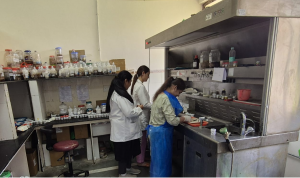
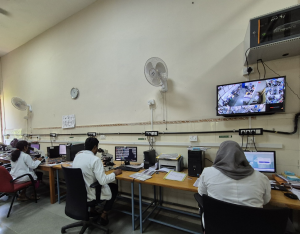
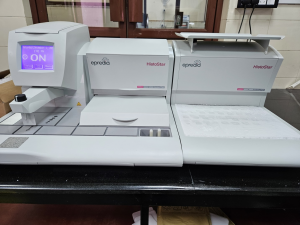
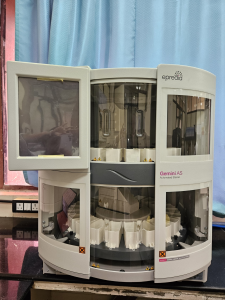
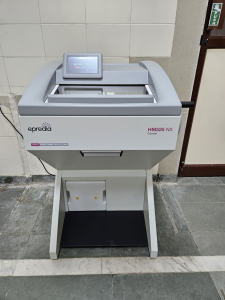
Cervical smears Cytology – Conventional and LBC
Body fluid cytology
Fine Needle Aspiration Cytology – routine
Ultrasound / CT guided FNAC and reporting.
Cell block study
Second opinion on slides.
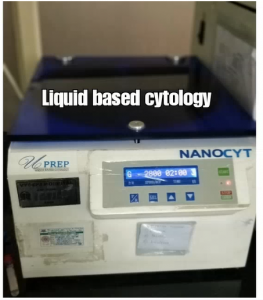
CBC- automated
Peripheral blood smears reporting
Bone marrow aspiration smear and Bone marrow biopsy reporting
Coagulation studies.
ESR automated
Second opinion/ Reviews.
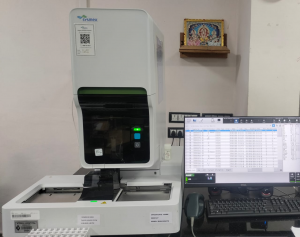
Urine chemistry and microscopy – manual & automated
Semen analysis – routine (automated) and Sample preparation for IUI procedure.
ANA screening – Immunofluorescence microscopy – ds-DNA, c- ANCA & p-ANCA.
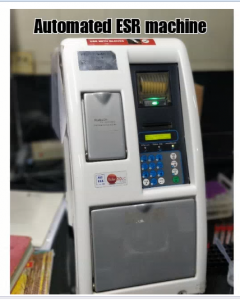
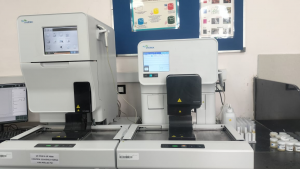
Central Museum
VIDA – Ultra Modern Museum using a blend of E-Platform & Regular specimens, Charts & Photographs along with other exhibits. There are both E-Catalogues as well as hard copies for ready reference.
The museum contains HD displays, audio visual exhibits & computerized software driven facility for students and other visitors
Wet Specimens 142; Dry specimens 22 Charts 168 Photographs 20
Departmental Museum
No of specimen 470
No of charts-168
| HISTOPATHOLOGY NEW | |||
|---|---|---|---|
| Sl.No | Name of Equipment | Serial No | model/Make/Year of Make |
| 1. | Autostainer | GT7843H2308EP | GEMINI AS |
| 2. | Embedding Station | HS3808A2308EP | EPREDIA |
| 3. | Cold Plate | HS3795B2308EP | EPREDIA |
| 4. | Cryostat | S23020431EP | HM 525NX UV |
| 5. | Centrifuge | 2JLN41076 | R.8plus /21278-1Transcal |
| DEPARTMENT OF HAEMATOLOGY | ||||
|---|---|---|---|---|
| S.NO | INSTRUMENT NAME | MAKE | SERIAL NO | VYDEHI NO |
| 1 | SYSMEX XN 1000-1 | SYSMEX | 51509 | VH-3004 |
| 2 | SYSMEX XN 1000-2 | SYSMEX | 51510 | VH-3005 |
| 3 | SYSMEX UF 4000 | SYSMEX | 26673 | |
| 4 | SYSMEX UC-3500 | SYSMEX | 13137 | |
| Sl. No | Author 1st, 2nd and corresponding author | Title of the paper | Whether Published in International National State/ Institutional Journals Name of the Journal | Citation of the journal | Details Of indexing | Date of Publications | Page No: Volume ISSN No: |
|---|---|---|---|---|---|---|---|
| 1. | Dr. Sumana.B.S: 2nd author | Dipstick screening for urinary Tract Infection in adolescent school girls; evaluation of self-screening ability | National Journal Journal of Clinical diagnosis and Research | Emerging sources citation index (Web of science) Directory open accesses journals (DOAJ) | December 2019 | ||
| 2. | Dr.Vidya K: Corresponding Author | IHC The needof hour in classifying lung tumours effectively on guided biopsies | National journal Indian journal of Pathology and Oncology | Index Copernicus | October-Dec 2019 | Volume 6, pISSN 2394-6784 eISSN 2394-6792 | |
| 3. | Dr.Vidya K: Corresponding Author | Study of radiologically assisted FNAC in abdominopelvic lesions | International journal International journal Of contemporary Pathology | Index Copernicus | Accepted for publication manuscript No1590/IJOCP 2019 | pISSN 2394-790x eISSN 2395-1184 | |
| 4. | Dr.Vidya K: Corresponding Author | Her-2/ neu Revisited The role of Her2/ neu in colorectal carcinoma- A three year study on colonic biopsies | National Journal Indian journal of Pathology Research and practice | Index Copernicus | May –June 2019 | 325-333;Vol 8(3) pISSN 2278-148x eISSN2455-5320 | |
| 5. | Dr. Divya Nagaram: 1st author | Red cell distribution width as a screening test in the diagnosis of beta thalassemia trait | MedPulse International Journal of Pathology, | Index Copernicus | 05/08/2019 | Accepted Date: 11/09/2019 DOI: https://doi.org/10.26611/10151139 Print ISSN: 2550-7605, Online ISSN: 2636-4697, Volume 11, Issue 3, September 2019 pp 158-162 | |
| 6. | Dr. Divya Nagaram: 3rdauthor | The prevalence, etiology and patterns of thrombocytopenia among geriatric age group | International Journal of Clinical and Diagnostic Pathology | Index Copernicus | 2019; 2(1): 361-364 | DOI: https://doi.org/10.33545/pathol.2019.v2.i1f.94ISSN (P): 2617-7226 ISSN (E): 2617-7234 www.patholjournal.com 2019; 2(1): 361-364 Received: 04-11-2018 Accepted: 08-12-2018 | |
| 7. | Dr. Divya Nagaram: 3rdauthor | Clinicopathological correlation of thrombocytopenia | International Journal of Clinical and Diagnostic Pathology 0 | 2019; Index Copernicus | 2019; 2(1): 357-36 | DOI: https://doi.org/10.33545/pathol.2019.v2.i1f.93ISSN (P): 2617-7226 ISSN (E): 2617-7234 www.patholjournal.com 2019; 2(1): 357-360 Received: 01-11-2018 Accepted: 05-12-2018 | |
| 8. | Dr. Divya Nagaram: 1st author | Role of red cell distribution width in diagnosis of iron deficiency anemia | MedPulse International Journal of Pathology, | 23/08/2019 Index Copernicus | Volume 11 Issue 3 -September 2019 | DOI: https://doi.org/10.26611/1015113 | |
| 9. | Dr. Shivarudrappa.A.S 2nd Author | A Retrospective Study of Histopathological Changes in Electrocution in Tertiary Hospital. | Indian journal of forensic medicine and pathology National Journal | Index Copernicus Google Scholar | 2017 Vol 10 2 April-June page no134-38 | DOI:http://dx.doi.org/10.21088/ijfmp.0974-3383 ISSN: Print E-ISSN0974-3391 | |
| 10. | Dr. Shivarudrappa.A.S 3rd author | Incidental histopathological diagnosis of choroid plexus papilloma in medico legal autopsy- a series of 3 cases | International journal of contemporary pathology National Journal | Index Copernicus Google Scholalar | July -December 2017, Vol 3, No. 2 page no 16-18 | DOI: 10.5958/2395-1184. 12016.00014.6ISSN-2394-5806 (Print), e- ISSN-2320-5962 | |
| 11. | Dr Sumana B.S:3rd author | An International journal A Retrospective Study of Histopathological Changes in Electrocution in Tertiary Hospital. | Indian journal of forensic medicine and pathology National Journal | Index Copernicus Google Scholar | 2017 Vol 10 2 April-June page no134-38 | DOI:http://dx.doi.org/10.21088/ijfmp.0974-3383 ISSN: Print E-ISSN0974-3391 | |
| 12. | Dr. Prathima L: First& Corresponding | Diagnostic Accuracy of Manual Liquid Based cytology in Fine Needle Aspiration samples | Indian Journal Of Pathology: Research& Practice | Index Copernicus | 2017;6:428-30 | ||
| 13. | Dr. Shashikala:2nd author | Spectrum of tumour and tumour like lesions of Bone in a tertiary care hospital in North Karnataka,India | Indian journal of Pathology and oncology | Index Copernicus | 2017 December | Pg- 875-879 Vol:6 ISSN-2394-6784 | |
| 14. | Dr. RadhaR.K 1st Author | A histomorphological study of the non-neoplastic polypoidal masses of the nasal cavity, paranasal sinuses, and nasopharynx | International journal of Contemporary pathology National Journal | Google Scholar EBSCO | July-December 2016, Vol.2, No. 2 Page no07-12 | DOI: 10.5958/2395-1184. 12016.00024.3ISSN-2394-790X (Print), ISSN-2395-1184 | |
| 15. | Dr. Radha R K:1st Author &Corresponding Author | An International journal A Retrospective Study of Histopathological Changes in Electrocution in Tertiary Hospital. | Indian journal of forensic medicine and pathology National Journal | Scopus, Index Copernicus Google Scholar | 2017 Vol 10 2 April-June page no134-38 | DOI:http://dx.doi.org/10.21088/ijfmp. | |
| 16. | Dr. Radha R K:1st Author &Corresponding Author | A histomorphological study of the neoplastic polypoidal masses of the nasal cavity, paranasal sinuses, and nasopharynx | Indian Journal of Pathology and Oncology National journal | Directory open accesses journals (DOAJ) Index Copernicus ,Google Scholar EBSCO,INTERNATIONAL SCIENTIFIC INDEX | 2017; vol.4(1) January-March:39-44 | Impact factor 2.3 DOI:- 10.1823/6792. 12017.00009ISSN-2394-6784(Print), e-ISSN-2394-6792 | |
| 17. | Dr. .Radha R K: Corresponding Author | Incidental histopathological diagnosis of choroid plexus papilloma in medico legal autopsy- a series of 3 cases | International journal of contemporary pathology National Journal | International | July -December 2017, Vol 3, No. 2 page no 16-18 | DOI: 10.5958/2395-1184. 12016.00014.6ISSN-2394-5806 (Print),e- ISSN-2320-5962 | |
| 18. | 1 Dr.Gaythri:1st author and corresponding author | Histopathological study of malignant bone tumours in a tertiary care centre in Karnataka, India | National journal Indian journal of Pathology: Research and practice | Index Copernicus | |||
| 19. | 1st Author Dr. Sameera | Expression of P53 and EGFR in Glioblastoma | Indian Journal of medical research | Pubmed indexed | Dec 2017:146(6):738-745. | Indian J Med Res. 2017 Dec; 146(6): 738–745 doi: 10.4103/ijmr.IJMR_1179_15 ISSN 0971-5916 PMCID: PMC5926345 PMID: 29664032 | |
| 20. | Dr Shailaja Kupati:1st and corresponding author | Study of Genitourinary malformations in perinatal autopsies | Indian Journal of Pathology and Oncology | Index Copernicus ,Google Scholar EBSCO,INTERNATIONAL SCIENTIFIC INDEX | April-June 2017;4(2):254-259 | mpact factor 2.3 DOI:- 10.1823/6792. 12017.00009 | |
| 21. | Dr. Sumana.B.S: 2nd author | Expression of SOX@and EGFR in ameloblastoma,Odentoameloblastoma and ameloblastic carcinoma | National Journal Journal of Clinical diagnosis and Research | Emerging sources citation index (Web of science) Directory open accesses journals (DOAJ) | JULY 2018 | Vol 12(7):ZC48-ZC52 | |
| 22. | Dr. Shilpa.L: Corresponding author | Histopathological Evaluation of nonneoplasic and neoplastic lesions of cervix | National Journal: Indian journal of Pathology Research and practice An International Journal | Index Copernicus | June 2018 | DOI:http;//dx.doi.org/10.21088//ijprp.21088/ijprp.2278.148X.7618.16758-763: Volume 7(6): | |
| 23. | Dr. Shilpa.L: Corresponding author | Histopathological study of the architectural patterns of in situ carcinoma in cases of invasive breast cancer | Indian journal of Pathology Research and practice An International Journal | Index Copernicus | June 2018 | DOI:http;//dx.doi.org/10.21088//ijprp.21088/ijprp.2278.148X.7618.16797-804: Volume 7(6): | |
| 24. | Dr.Gaythri: 1st author and corresponding author | Spectrum of Tumour and Tumour-like lesions of Bone in a Tertiary Care Hospital in North Karnataka, India | National Journal Indian Journal of Pathology and Oncology | Index Copernicus | 2018 | ISSN no. 2394-6784 | |
| 25. | Dr. Sumana.B.S: 2nd author | Dipstick screening for urinary Tract Infection in adolescent school girls; evaluation of self screening ability | National Journal Journal of Clinical diagnosis and Research | Emerging sources citation index (Web of science) Directory open accesses journals (DOAJ) | December 2019 | ||
| 26. | Dr.Vidya K: Corresponding Author | IHC The needof hour in classifying lung tumours effectively on guided biopsies | National journal Indian journal of Pathology and Oncology | Index Copernicus | October-Dec 2019 | Volume 6, pISSN 2394-6784 eISSN 2394-6792 | |
| 27. | Dr.Vidya K: Corresponding Author | Study of radiologically assisted FNAC in abdominopelvic lesions | International journal International journal Of contemporary Pathology | Index Copernicus | Accepted for publication manuscript No1590/IJOCP 2019 | pISSN 2394-790x eISSN 2395-1184 | |
| 28. | Dr.Vidya K: Corresponding Author | Her-2/ neu Revisited The role of Her2/ neu in colorectal carcinoma- A three year study on colonic biopsies | National Journal Indian journal of Pathology Research and practice | Index Copernicus | May –June 2019 | 325-333;Vol 8(3) pISSN 2278-148x eISSN2455-5320 | |
| 29. | Dr. Divya Nagaram: 1st author | Red cell distribution width as a screening test in the diagnosis of beta thalassemia trait | MedPulse International Journal of Pathology, | Index Copernicus | 05/08/2019 | Accepted Date: 11/09/2019 DOI: https://doi.org/10.26611/10151139 Print ISSN: 2550-7605, Online ISSN: 2636-4697, Volume 11, Issue 3, September 2019 pp 158-162 | |
| 30. | Dr. Divya Nagaram: 3rdauthor | The prevalence, etiology and patterns of thrombocytopenia among geriatric age group | International Journal of Clinical and Diagnostic Pathology | Index Copernicus | 2019; 2(1): 361-364 | DOI: https://doi.org/10.33545/pathol.2019.v2.i1f.94ISSN (P): 2617-7226 ISSN (E): 2617-7234 www.patholjournal.com 2019; 2(1): 361-364 Received: 04-11-2018 Accepted: 08-12-2018 | |
| 31. | Dr. Divya Nagaram: 3rdauthor | Clinicopathological correlation of thrombocytopenia | International Journal of Clinical and Diagnostic Pathology 0 | 2019; Index Copernicus | 2019; 2(1): 357-36 | DOI: https://doi.org/10.33545/pathol.2019.v2.i1f.93ISSN (P): 2617-7226 ISSN (E): 2617-7234 www.patholjournal.com 2019; 2(1): 357-360 Received: 01-11-2018 Accepted: 05-12-2018 | |
| 32. | Dr. Divya Nagaram: 1st author | Role of red cell distribution width in diagnosis of iron deficiency Anemia | Med Pulse International Journal of Pathology, | 23/08/2019 Index Copernicus | Volume 11 Issue 3 -September 2019 | DOI: https://doi.org/10.26611/1015113 | |
| 33. | Dr.Sumana..B.S: 2nd author | Immunohistochemical expression of Ki67 and p53 in primary breast carcinoma and combined Ki67-p53 status phenotype in hormone receptor positive breast carcinoma | international Journal of Clinical diagnosis and Research | – | Emerging sources citation index (Web of science) Directory open accesses journals | March 2020 | Vol-14(3) EC21-EC28 |
| 34. | Dr.Prathima: 1st authour | Risk srtatification of patients with Gastrointestinal srtomal tumours by histopathological and immunihistochemical analysis | JCDR | DOAJ Index Copernicus | Nov 01 2020 DOI 10.7860/JCDR/2020/44950.14234 | Vol.14(11)EC15-18 | |
| 35. | Dr.Sumana..B.S: 2nd author | Immunohistochemical expression of Ki67 and p53 in primary breast carcinoma and combined Ki67-p53 status phenotype in hormone receptor positive breast carcinoma | interational Journal Journal of Clinical diagnosis and Research | Emerging sources citation index (Web of science) Directory open accesses journals | March 2020 | Vol-14(3) EC21-EC28 | |
| 36. | DrPrathima: 1st author | Risk srtatification of patients with Gastrointestinal srtomal tumours by histopathological and immunihistochemical analysis | JCDR | DOAJ Index Copernicus | Nov 01 2020DOI 10.7860/JCDR/2020/44950.14234 | Vol.14(11)EC15-18 | |
| 37. | Dr. Shilpa L: 2nd author and corresponding author | Histopahological Spectrum of Mediastinal lesions in a tertiary carecentre-a two year Retropsective study. | International Journal of Health and Clinical Research | DOAJ | August 2021 | 9-12: Volume 4(15). | |
| 38. | Dr Radha.R.K 1 st Author &Corresponding Author | Cytological Evaluation of Neck lymph nodes for metastatic disease | An international journal of GLOBAL JOURNAL FOR RESERCH ANALYSIS | Radha.R.K etal | Index Copernicus,Google Scholar EBSCO ,INTERNATIONAL SCIENTIFIC INDEX ,Indian citation index | 2021 April | . Vol -111/issue 01/January 2022 :1-3 |
| 39. | Dr Prathima 3rd Author | Cytological Evaluation of Neck lymph nodes for metastatic disease | An international journal of GLOBAL JOURNAL FOR RESERCH ANALYSIS | Radha.R.K etal | Index Copernicus,Google Scholar EBSCO ,INTERNATIONAL SCIENTIFIC INDEX ,Indian citation index | 2021 April | . Vol -111/issue 01/January 2022 :1-3 |
| 40. | Dr Shailaja K 1st author | Study of histopathological findings in sudden unexpected natural deaths in tertiary care hospital | Indian journal of Forensic Medicine & Pathology | Shailaja etal | Directory open accesses journals | Apr- June 2021 | Vol-14, No 4, pg: 103-107 |
| 41. | , Dr Gayathri T, 2nd author | Study of histopathological findings in sudden unexpected natural deaths in tertiary care hospital | Indian journal of Forensic Medicine & Pathology | Shailaja etal | Directory open accesses journals | Apr- June 2021 | Vol-14, No 4, pg: 103-107 |
| 42. | Dr Shashikala V 3rd author | Study of histopathological findings in sudden unexpected natural deaths in tertiary care hospital | Indian journal of Forensic Medicine & Pathology | Shailaja etal | Directory open accesses journals | Apr- June 2021 | Vol-14, No 4, pg: 103-107 |
| 43. | , Dr Prathima S 4th author | Study of histopathological findings in sudden unexpected natural deaths in tertiary care hospital | Indian journal of Forensic Medicine & Pathology | Shailaja etal | Directory open accesses journals | Apr- June 2021 | Vol-14, No 4, pg: 103-107 |
| 44. | Dr Radha.R.K 1st Author& Corresponding author | Histomorphological study of colonoscopic biopsies in patients presenting with chronic diarrhea | IP Archives of Cytology and Histopathology Reserch | Radha.R.K etal | Index Copernicus Google Scholar EBSCO | 2021;6(3):P1 -7 | ISSN no 2581-5725 DOI 2581-5725/@2021 |
| 45. | Dr Prathima 4th author | Histomorphological study of colonoscopic biopsies in patients presenting with chronic diarrhea | IP Archives of Cytology and Histopathology Reserch | Radha.R.K etal | Index Copernicus Google Scholar EBSCO | 2021;6(3):P1-7 | ISSN no 2581-5725 DOI 2581-5725/@2021 |
| 46. | Dr Radh.R.K 1st Author& Corresponding author | Cytological evaluation of neck lymphnodes for metastaic disease | Global journal for research analysis | Radha.R.K etal | Indian citex Index Index Copernicus Google Scholar EBSCO Citex medicus | 2022vol11 issue 01 jan1-3 | DOI 10.36106/gjra ISSN no2277-8160 |
| 47. | Dr Prathima S. 3rd author | Cytological evaluation of neck lymphnodes for metastaic disease | Global journal for research analysis | Radha.R.K etal | Indian citex Index Index Copernicus Google Scholar EBSCO Citex medicus | 2022vol11 issue 01 jan1-3 | DOI 10.36106/gjra ISSN no2277-8160 |
| 48. | Dr Radha.R.K 2nd author | Incidental findings of liver disease A study at inTertiary care center | Indian journal of forensic medicine and pathology National Journal | Nevedita et al | Scopus Index Copernicus Google Scholar EBSCO, International scientific index | 2022 Vol 15 (4) October-december- page no243-247 | 10.2108:IJFMP 0947.3383.154226 DOI:http://dx.doi.org/10.21088/ijfmp. |
| 49. | Dr Prathima 3rd author | Incidental findings of liver disease A study at inTertiary care center | Indian journal of forensic medicine and pathology National Journal | Nevedita et al | Scopus Index Copernicus Google Scholar EBSCO, International scientific index | 2022 Vol 15 (4) October-december- | 10.2108:IJFMP 0947.3383.154226 page no243-247 DOI:http://dx.doi.org/10.21088/ijfmp. |
| 50. | Dr Gayathri T 2nd author . | Histopathological Spectrum of Pulmonary Lesions in Autopsies- A Two Year Retrospective Study | Indian Journal of Forensic Medicine and Pathology National Journal | Husnain et al | Scopus | October-december-10.2108:IJFMP 0947.3383.154226 | DOI:http://dx.doi.org/10.21088/ijfmp. 2022 Vol 15 (4) |
| 51. | , Dr ShailajaKupati,3rd author | Histopathological Spectrum of Pulmonary Lesions in Autopsies- A Two Year Retrospective Study | Indian Journal of Forensic Medicine and Pathology National Journal | Husnain et al | .Scopus | October-december-10.2108:IJFMP 0947.3383.154226 | DOI:http://dx.doi.org/10.21088/ijfmp. 2022 Vol 15 (4) |
| 52. | Dr Shashikala V, 4th author | Histopathological Spectrum of Pulmonary Lesions in Autopsies- A Two Year Retrospective Study | Indian Journal of Forensic Medicine and Pathology National Journal | Husnain et al | Scopus | October-december-10.2108:IJFMP 0947.3383.154226 | DOI:http://dx.doi.org/10.21088/ijfmp. 2022 Vol 15 (4) |
| 53. | Dr Prathima S.5th author | Histopathological Spectrum of Pulmonary Lesions in Autopsies- A Two Year Retrospective Study | Indian Journal of Forensic Medicine and Pathology National Journal | Husnain et al | Scopus | ) October-december-10.2108:IJFMP 0947.3383.154226 | DOI:http://dx.doi.org/10.21088/ijfmp. 2022 Vol 15 (4 |
| 54. | Dr. Gayathri T, 1st author | BIRADS Lexicon and its Histopathological Corroboration in the DIagnosis of Breast Lesions | International Journal of Innovative Science and Research Technology | Pubmed | June 2022 | Volume 7, Issue 6, pg 73-79 | |
| 55. | , Dr.Prathima S, 2nd author | XanthogranulomatousOophoritis- A master disguise | International Journal of Scientific Research National journal | National Journal | September 2023 | Volume 12, Issue 9, Pg 2277/8179 DOI 10.36106 IJSR | |
| 56. | Dr. Gayathri T 3rd author | Xanthogranulomatous oophoritis: A master disguise | International journal of Scientific Research | Pubmed central | September 2023 | Volume 12, Issue 9, Pg 2277/8179 DOI 10.36106 IJSR | |
| 57. | Dr. Prathima 2nd author | Histopathological Spectrum of skin lesions in a tertiary care centre. | International Journal of Science and Research National Journal | Volume 13 issue to Feb 2024 | ISSM 2319-7064 SJIF(2022) 7.942 | ||
| 58. | Dr Shilpa L 3rd author | High Malignancy Risk and its Predictors in South Indian Patients with Bethesda II Thyroid Nodules | Cureus International journal | Pubmed | Feb2024 | Journa DOI 10.779/ CUREUS | |
| 59. | . Dr Shilpa L 2nd author | High Diagnostic Accuracy of Thyroid stimulationghormone(TSH) Receptor antibodies in distinguishing Graves Disease and subacute Thyrotoxicosis in the Indian population | Cureus International Journal | Naga nitin et al | pubmed | Cureus 16 (e54303 DOI 10.7754/cureus54343) | DOI 10.7754/cureus54343 |
| 60. | Dr .Radha R.K, 1st author and corresponding author | Histopathological Spectrum of Kidney Lesions in an Autopsy 2 years study at Tertiary Care Hospital. | Indian Journal of Forensic Medicine and Pathology National Journal | Radha.R.K et al | Scopus | . 2024 Vol 17 (1) January-March- Page no 19-23, 0974.3383.17124.3 | DOI:http://dx.doi.org/10.21088/ijfmp |
| 61. | Dr . Prathima S 2nd author | Histopathological Spectrum of Kidney Lesions in an Autopsy 2 years study at Tertiary Care Hospital.. | Indian Journal of Forensic Medicine and Pathology National Journal | Radha.R.K et al | Scopus | 2024 Vol 17 (1) January-March- Page no 19-23, 0974.3383.17124.3 | DOI:http://dx.doi.org/10.21088/ijfmp. |
| 62. | Dr.Gayathri T, 2nd author | . An Unusual Case Report- An Adult OF Chronic Myeloid Leukemia presenting as Acute Myeloid Leukemia M7(Megakarocytic Blast Crisis) | International Journal of Science and Research National journal | Swathi et al | www.ijsr.net Google scholar | Volume 13 issue 2 Feb 2024 | Doi http:// dx.doi.org10./10.21275/SR24201183620 |
| 63. | Dr.Kavya N, 3rd author | . An Unusual Case Report- An Adult OF Chronic Myeloid Leukemia presenting as Acute Myeloid Leukemia M7(Megakarocytic Blast Crisis) | International Journal of Science and Research National journal | Swathi et al | www.ijsr.net Google scholar | Volume 13 issue 2 Feb 2024 | Doi http:// dx.doi.org10./10.21275/SR24201183620 |
| 64. | Dr. Prathima 4th author | S. An Unusual Case Report- An Adult OF Chronic Myeloid Leukemia presenting as Acute Myeloid Leukemia M7(Megakarocytic Blast Crisis) | International Journal of Science and Research National journal | Swathi et al | www.ijsr.net Google scholar | Volume 13 issue 2 Feb 2024 | Doi http:// dx.doi.org10./10.21275/SR24201183620 |
| 65. | Dr Devasmita Gain 1st author | Cytomorphological patterns of AFB positive tubercular lymphadenitis: A cross sectional study | National journal of lab medicine | Devasmita et al | . | 2024 Jan, Vol-13(1): PO56-PO59 | Original Article DOI: 10.7860/NJLM/2024/63914.2822 |
| 66. | Dr Radha.R.K 3rd author . | Semen analysis revisited- qualitative assessment of sperms using cytochemical stains-?the new norms of male infertility workup | International Journal Journal of pathology of Nepal | Vishnu et al | DOAJ | Acepted April 24 2023;13(2):2066-70 | DOI: 10.3126/jpn.v13i2.38197. |
| 67. | Dr Prathima 4th author . | Semen analysis revisited- qualitative assessment of sperms using cytochemical stains-?the new norms of male infertility workup | International Journal Journal of Pathology of Nepal | Vishnu et al | DOAJ | 2023;13(2):2066-70 | DOI: 10.3126/jpn.v13i2.38197. |
| Sl. No | 1st year -2021 | 2nd year -2022 | 3rd year -2023 | 4th year 2024 | ||||
|---|---|---|---|---|---|---|---|---|
| National journals NO. | Foreign journals NO. | National journals NO. | Foreign journals NO. | National journals NO. | Foreign journals NO. | National journals NO. | Foreign journals NO | |
| 1. | 11 | NIL | 07 | NIL | 02 | 0 | 11 | 0 |
Modified time table and curriculum is being followed as per the New CBME guidelines. AETCOM sessions of second year and whenever required in other years are also there. Electives in the department is being planned for interested students
Goal
The broad goal of the teaching of undergraduate student in Pathology is to provide the students with a comprehensive knowledge of the mechanisms and causes of disease, in order to enable him/her to achieve complete understanding of the natural history and clinical manifestations of disease.
Knowledge
At the end of the course, the student should be able to :
Skills
At the end of the course, the student should be able to:
Integration
At the end of training he/she should be able to integrate the causes of disease and relationship of different etiological factors (social, economic and environmental) that contribute to the natural history of diseases most prevalent in India.
Academic Milestones
UG teaching: Commenced in the year of 2003
PG teaching: Commenced in the year of 2008
Academic activities
Projects Current and Completed
Completed the project
RESEARCH PROJECT – ICMR –NCDIR- 2019-2024
Completed research in 2024 February Indian council of medical research-National centre for disease inormatics and reserch ICMR -NCDIR
Incidental Gallbladder cancer and other Premalignant gall bladder conditions in India towards early detection of gallbladder cancer 2019 -2024 -5 year study IN VIMS&RC as Co-researcher Dr. Radha.R.K. Associate Professor along with Dr Ganesh Professor and HOD Oncology under the Guidance
Professor Dr Prasenjit Das AIIMS New Delhi Co-investigator: Dr Radha.R. K Professor, Dr Kavya Assistant professor
On-going Projects:
Co-investigator: Dr Prathima S
Co-investigator: Dr Prathima S
Co-investigator: Dr Sumana BS.
Principal Investigator: Dr Sameera. K
PG Dissertation
16.Her2-neu in breast carcinoma and their correlation with established prognostic factors – Dr. Rishiraj Baruah, Dr.Sumana B S,Guide
Dr A S Shivarudrappa.2017
17.Spectrum of gastrointestinal malignancies in a tertiary care center – Dr. Manasa K, Guide Dr A S Shivarudrappa.2016
18.Correlation of bone marrow aspiration and bone marrow biopsy finding in hematological disorders – Dr. Rashmi G Basavraj, Dr A S Shivarudrappa.2016
19.Correlation of FNAC and histopathological examination of thyroid lesions- Dr. Kiran Verma, Dr A S Shivarudrappa.2016
20.Diagnostic role of reporting thyroid cytology by Bethesda system – Dr Prasit Kumar Ghosh, Dr Sumana B.S.2016
21.Correlation of serum Prostate specific antigen with histomorphology in prostatic lesions- Dr. Tejshee Bhushan,Guide Dr Sumana B.S2016
22.Correlation of FNAC and biopsy of Lymph nodes – Dr. Ankita Mehta, GuideDr Prathima S.2017
23. Dr.Santosh-An Immunohistochemical study of Ki 67 antigen levels in pso riasis-a comparative analysis with normal skin.
24. Distribution and pathological features of periampullary lesions. Dr. Kadiri anusha, Guidedr. Niranjan. J.2019
15. Histopathological spectrum of non-infectious papulosquamous lesions of skin. Dr. Spoorthi Srinivas,Guide Dr. Shivarudrappa A S.2019
26. Diagnostic utility of aspiration cytology in evaluation of lateral neck swelling. Dr. Anita kumari,Guide Dr. Prathima S.2019
27. The role of testicular fine needle aspiration in male infertility. Dr. Sameeranandan reddy,Guide Dr. Niranjan. J.2019
28. Study of platelet indices and its role in evaluation of thrombocytopenia. Dr. Khushboo saran, GuideDr. Vidya .K.2019
29. Significance of serum vascular endothelial growth factor levels in cancer patients and correlation with clinicopathological parameters. Dr.Harini V R,Guide
Vishnupriya.vGuide, Dr. Vidya. K.2020 Dr. Sumana B S.2020
30. Assessment of human sperm dna integrity by modified aniline blue method and its correlation with routine semen analysis in infertility evaluation. Dr.
31. A clinical and histopathological study of spectrum of lesions in urinary bladder: Dr. Tarun mittal, Dr. Guide Niranjan j.
32. Histopahological spectrum of thyroid lesions and its correlation with ultrasonography and thyroid profile: Dr. Nimisha gupta, Dr. Prathima. S 2020
33. Stromal cd10 expression in invasive breast carcinoma and its correlation with clinicopathological parameters and molecular subtypes- an
immunohistochemical study. Dr. Kavya N, Guide Dr. Sumana.B.S 2021
34. Application of cytological grading system in palpable breast lump with histopathological correlation: Dr. Shruthi Reddy, Guide Dr. Shilpa L2021
35. Categorization of thyroid fnac using bethesda system for reporting with clinico radiological correlation. Dr. Gollapalli Keerthy Sudha,Guide Dr. Vidya.K
V.2022
clinicopathological features. Dr. Pooja A S, GuideDr. Shilpa L.2022
Uzma ,Guide Dr. Vidya K 2023
T.2023
Dr. Deepa,Guide Dr. Prathima S.2023
PG THESIS 0n going
UG Projects
student: akansha swain (2ND YEAR MBBS)
Guide: Dr Radha R K
histopathological biopsy results.
Student: A Sai Thanmaye (2nd year, MBBS)
GUIDE: Dr. Gayathri T
Student: Akansha Rao (2nd yr MBBS)
Guide: Dr Shailaja K
mellitus.
Student: Nitya R (2nd yr MBBS)
Guide: Dr Prathima S
Student: Dr Shwetha Ramesh
Guide: Dr Sumana B S
Student: Nitya Menon
Guide: Dr Shilpa L
Student: Vasudha
Guide: Dr Shilpa L
Central Diagnostic Laboratory (CDL) is accredited by National Accreditation Board for Testing and Calibration Laboratories (NABL)
| Sl. No. | Faculty Name | Date of award | Awarding agency/ Society | Area of contributions | National/ International/ State etc., |
|---|---|---|---|---|---|
| 1 | Dr. Sumedha Vats | 2012 | KCIAPM | 3rd place for her poster presentation on ‘Giant cellular Thymolipoma’ in the Annual state conference of KCIAPM in 2012. | State Association |
| 2 | Dr. Shefali H.Karve | 2014 | KCIAPM | Best paper presentation: Her-2-neu overexpression in colorectal carcinoma. | State Association |
| 3 | Dr. Nimisha G, | 2018 | KCIAPM | 2nd position for her oral paper presentation on ‘Study of radio logically assisted fine needle aspiration cytology in abdominopelvic lesions’ at state conference of KCIAPM in 2018. | State Association |
| 4 | Dr. Shailaja Kupati, | 2018 | KCIAPM | oral presentation among top 5 at the KCIAPM conference, Bangalore in the year 2018. | State Association |
| 5 | Mrs. Premalatha, Senior Technician, | 2019 | Beckman coulter | won 1st prize in quiz conducted for Technicians during the CME on ‘Hematology update’ by Beckmann Coulter at Columbia Asia Hospital, Yeshwanthpur, Bangalore on 25th April, 2019. | International |
| 6 | . Dr. Supriya Tiwari, | 2019 | KCIAPM | as Social Media Committee member with KCIAPM at the state conference conducted at Bagalkot in the month of September, 2019. | State Association |
| 7 | Dr.Kavya and Dr.Keerthy | Jan 2020 | ESIC Med college | second prize in 9TH ANNUAL KCIPAM POST GRADUATE QUIZ conducted in ESIC Medical collage Bangalore on 31st JAN2020. | National |
| 8 | Dr. Shailaja K. | 2021 | KCIAPM | Session topper award in the state KCIAPM conference in 2021 for Oral paper | State Association |
| 9 | Dr. Keerthy Sudha | July 2021 | RGUHS | 5th Rank in the MD Pathology exams in the exams conducted in July 2021 | State Rank |
| 10 | Dr.Keerthy and Dr. Shruthi . | 2020 | Sri Ramachandra University | 1st prize in the quize conducted by SPARC, Sri Ramachandra University in 2020. | National |
| 11 | Dr. Swathi R | 2022 | ESIC Mdical College & PGIMSR | 2nd place for her poster presentation: Ig G4 related disease: Chennai | National |
No. of Awards/recognition received by the college Faculty 3 years
| Sl. No | 1st year 2019 | 2nd year 2020 | 3rd year 2021 |
|---|---|---|---|
| 1. | 02 | 02 | 02 |
Conferences, CMEs and paper and poster presentations
| SNo | Authors | Topic | Conference | |
|---|---|---|---|---|
| 1 | Dr Sumana B.S | Unusual pathologic presentation of functional parathyroid adenoma – study of 4 cases | 41st Annual KCIAPM conference, September 2014, Bangalore | |
| 2 | Dr Kiran Verma, Dr Shivarudrappa | Poster Presentation: A case of ambiguous genitalia with benign mature teratoma of ovary | IAC KCCON, Feb 2015, Bellary | |
| 3 | Dr Rashmi G. S. Basvaraj, Dr C. J. Prakash | Poster presentation: Cytology of conjunctival nodule diagnosed as Mantle cell lymphoma – a rare case | IAC KCCON, Feb 2015, Bellary | |
| 4 | Dr Prasit Kumar Ghosh, Dr Indu M | Poster presentation: Malakoplakia of the urachus- masquerading as malignancy | 33rd Annual National CME in Pathology, June 2015, Belgavi | |
| 5 | Dr Tejshee Bhushan, Dr Rekha Singh, Dr C. J. Prakash | Poster presentation: A rare case of primary leiomyosarcoma of larynx | 33rd Annual National CME in Pathology, June 2015, Belgavi | |
| 6 | Dr Prathima S | Paper Presentation: Impact of the Bethesda System of reporting Thyroid cytopathology | International conference in male genitourinary pathology, July 2015, Bangalore | |
| 7 | Dr Manasa Reddy K, Dr. A.S Shivarudrappa | Poster presentation: Subependymal giant cell astrocytoma in tuberous sclerosis | International conference in male genitourinary pathology, July 2015, Bangalore | |
| 8 | Dr Arpita Singh Dr Indu M | Poster presentation: A rare case of acute erythroid leukaemia in a female patient | International conference in male genitourinary pathology, July 2015, Bangalore | |
| 9 | Dr Ankita Mehta Dr Rojaramani Dr Prathima S Dr C.J. Prakash | Poster presentation: Ovarian Squamous cell carcinoma arising from mature cystic teratoma – a rare entity | International conference in male genitourinary pathology, July 2015, Bangalore | |
| 10 | Dr Manasa Reddy K, Dr A.S. Shivarudrappa, Dr C.J Prakash | Paper Presentation: Spectrum of gastrointestinal malignancies in Vydehi Institute of Medical Sciences and Research Centre | 42nd Annual KCIAPM Conference, September 2015, Mangalore | |
| 11 | Dr Rashmi G. S. Basvaraj, Dr A.S. Shivarudrappa | Paper Presentation: Correlation of bone marrow aspirate and biopsy findings in diagnosis of haematological disorders – a study of 100 cases | 42nd Annual KCIAPM Conference, September 2015, Mangalore | |
| 12 | Dr Kiran Verma, Dr. A.S. Shivarudrappa | Paper Presentation: A correlation study of FNAC and histopathology in 100 cases of thyroid | 42nd Annual KCIAPM Conference, September 2015, Mangalore | |
| 13 | Dr Rishiraj Baruah, Dr Sumana B.S Dr A.S. Shivarudrappa | Poster Presentation: Sebaceous carcinoma of the eyelid – a complex entity | AIICME, Jan 2016, Bhubhaneshwar | |
| 14 | Dr Angkita Kalita, Dr Prathima S | Paper Presentation: Diagnostic utility of FNAC in intra-abdominal lesions | CYTOCON, Jan 2016, Mysore | |
| 15 | Dr Prasit Kumar Ghosh, Dr Sumana B.S, Dr A.S. Shivarudrappa | Paper Presentation: Diagnostic accuracy of the Bethesda system for reporting thyroid cytological aspirates with histopathological correlation – one year study | International CME in Pathology, Feb 2016, Goa | |
| 16 | Dr Tejshee Bhushan, Dr Sumana B.S, Dr A.S. Shivarudrappa | Paper Presentation: Correlation between prostate specific antigen and prostate pathology | International CME in Pathology, Feb 2016, Goa | |
| 17 | Dr Ankita Mehta, Dr Prathima S | Paper Presentation: Diagnostic efficacy of fine needle aspiration cytology of lymphadenopathy with histopathological correlation | International CME in Pathology, Feb 2016, Goa | |
| 18 | Dr. Angkita Kalita, Dr. Prathima S, Dr. Shivarudrappa A S | Diagnostic accuracy of Fine Needle Aspiration Cytology in valuation of intraabdominal lesions. | ||
| 19 | Dr. K Jaya Swathi, Dr. Sumana B S, Dr. Shivarudrappa A S | Spectrum of lesions detected by fine needle aspiration cytology in head and neck lesions.
| International CME in Pathology, Histopathology and Cytology 2018, February, Goa | |
| 20 | Dr. Anusha K, Dr. Niranjan J, Dr. Shivarudrappa A S | Histopathological spectrum of periampullary lesions. | ||
| 21 | Dr. Spoorthi,, Dr. Cheena Garg, Dr. Shivarudrappa A S | Spectrum of non haematological paediatric tumors in a tertiary care center.
| International Conference of Pediatric Pathology, BMC RJ, 27th& 28th April 2018. | |
| 22 | Dr. Sameeranandan Reddy, Dr. Vidya K, Dr. Shivarudrappa A S | Diagnostic correlation of ovarian neoplasms by frozen section and paraffin section.
| National CME in Pathology , Karpaga Vinayaga medical college, Kanchipuram, Nov 2018 | |
| 23 | Dr. Anita, Dr. Prathima S, Dr. Shivarudrappa A S | Cyto-morphological spectrum of space occupying lesions of liver | IAC- KCCON, SDUMC, Kolar, February 2018 | |
| 24 | Dr. Harini V R, , Dr. Sumana B S, Dr. Shivarudrappa A S | Significance of modified Masood’s scoring system in cytological diagnosis of palpable breast lumps.
| IAC KC-CON 2018 March 2nd& 3rd 2018 | |
| 25 | Dr. Khushboo Saran, Dr. Vidya K, Dr. Shivarudrappa A S | Histomorphological spectrum of transbronchial biopsy of lung.
| ||
| 26 | Dr. Vishnupriya, Dr. Vidya K, Dr. Prathima S | Histomorphological spectrum of meningiomas: a Retrospective study.
| International conference on dermatopathology and soft tissue tumor, MVJ medical College, March 2019 | |
| 27 | Dr. Nimisha G, Dr. Prathima S | Study of radiologically assisted fine needle aspiration cytology in abdominopelvic lesions.
| ||
| 28 | Dr. Kavya, Dr. Sumana B S | Histopathological spectrum of Non neoplastic lesions of upper GI endoscopy
| International conference on dermatopathology and soft tissue tumor, MVJ medical College, March 2019 | |
| 29 | Dr. Tarun Mittal, Dr. Niranjan J, Dr. Shivarudrappa A S | Histopathological spectrum of neoplastic lesions of upper GI endoscopy
| International conference on dermatopathology and soft tissue tumor, MVJ medical College, March 2019 | |
| 30 | Dr. Angkita Kalita, Dr. Prathima S, Dr. Shivarudrappa A S | Adrenal Myelolipoma: An uncommon Benign Neoplam. | ||
| 31 | Dr. K Jaya Swathi, Dr. Sumana B S, Dr. Shivarudrappa A S | Unexpected and sudden death due to colloid cyst of the third ventricle in young male.
| NPSICON April 2017, NIMHANS, Bangalore | |
| 32 | Dr. Anusha K, Dr. Niranjan J, Dr. Shivarudrappa A S | A case of cervical leiomyoma in young female. | Golden Jubilee CME, 14th& 15th July 2016, St John;s Medical College, Bangalore, | |
| 33 | Dr. Spoorthi, Dr. Shivarudrappa A S | A rare case presentation of Angiomyomatous hamartoma of inguinal lymphnode.
| Golden Jubilee CME, 14th& 15th July 2016, St John;s Medical College, Bangalore, | |
| 34 | Dr. Harini, Dr. Sumana B S, Dr. Shivarudrappa A S | Diagnostic dilemma: Transitional cell carcinoma v/s Malignant Brenner tumour Ovary.
| International CME in Pathology, Histopathology and Cytology 2018, February, Goa | |
| 35 | Dr Sameeranandan reddy, Dr. Niranjan J, Dr. Shivarudrappa A S | A case of solid pseudo papillary tumor of pancreas diagnosed on FNAC
| IAC- KCCON, SDUMC, Kolar, February 2018. | |
| 36 | Dr Anitha | Early metastasis of testicular seminoma to urinary bladder: A rare entity | Breast Cancer Conference at Bangalore Medical College 2017 | |
| 37 | Dr Khusboo | A Tonsillar Cartilagenous Choriostoma | ||
| 38 | Dr Nimisha | Malignant oncocytoma of parotid gland: A rare malignancy | ||
| 39 | Dr Vishnupriya | Giant congenital melanocytic nevus: A rare entity. | Annual conference in JNMC, Belgaum 2018. | |
| 40 | Dr. Kavya N | Mucosal schwann cell hamartoma – a rare case report | Annual conference in JNMC, Belgaum 2018. | |
| 41 | Dr. Tarun Mittal, Dr. Prathima S, Dr. Niranjan J, Dr. Shivarudrappa A S | Lymphangioma of Ovary – A rare case presentation | International CME in Pathology, Histopathology and Cytology February, Goa | |
| 42 | Dr.Supriya Tiwari, Dr. Prathima S, Dr. Shivarudrappa A S | Maignant Phyllodes with osteochondrosarcomatous differentiation | International conference on dermatopathology and soft tissue tumor, MVJ medical College.March 2019 | |
| 43 | Dr. Sameena E, Dr. Vidya K, Dr. Shivarudrappa A S, Dr. Niranjan J | Solitary Extramedullary Plasmacytoma as a nasal mass | International conference on dermatopathology and soft tissue tumor, MVJ medical College.March 2019 | |
| 44 | Dr. Keerthi Sudha G, Dr. Vidya K, Dr. Prathima S | Spectrum of Histo-pathological lesions in nephrectomy specimen in a tertiary care centre – A two year retrospective study | 47 th Annual conference KAPCON :October 2020 | |
| 45 | Dr. Shruthi, Dr. Shilpa L, Dr. Prathima S | Histopathological spectrum of Ovarian lesions | 47 th Annual conference KAPCON :October 2020 | |
| 46 | Dr.Supriya Tiwari, Dr. Prathima S | Does endometrium have an answer to infertility? | 46 th Annual conference KAPCON 2019, SNMC, Bagalkot | |
| 47 | Dr. Sameena E, Dr. Shashikala V, Dr. Prathima S | Hansen’s – is it really at the verge of elimination? A study of clinical and histopathological correlation in Hansen’s disease in a tertiary care hospital, Bangalore | 46 th Annual conference KAPCON 2019, SNMC, Bagalkot | |
| 48 | Dr. Keerthi Sudha G, Dr. Vidya K, Dr. Niranjan J, Dr. Shivarudrappa A S | Recurrent Rosai Dorfman Disease | CME on histotechniques and Immunohistochemistry. March 2019, Sri Jayadeva Institute Bangalore | |
| 49 | Dr. Shruthi Reddy, Dr. Shashikala V, Dr. Shailaja K, Dr. Prathima S | Inguinal endometriosis- A rare entity | 2019 March, JNMC Belgaum | |
| 50 | Dr. Pooja A S, Dr.Shilpa L, Dr. Sameera K, Dr. Prathima S | Plasmablastic Lymphoma – A rare aggressive tumor of the oral cavity in a seropositive patient | 47 th Annual conference KAPCON :October 2020 | |
| 51 | Dr. Safina Taskeen, Dr. Radha R K, Dr. Shashikala V | Thoracic pleural endometriosis. | 47 th Annual conference KAPCON :October 2020 | |
| 52 | Dr. Manikya M, Dr. Vidya K, Dr. Prathima S, Dr. Abhinay I | Intramuscular cavernous hemangioma with osseous metaplasia | 4th international paediatric and perinatal pathology conference 2020: Sri Ramachandra Medical College and Research Institute, Chennai, 6th– 8th February 2020. | |
| 53 | Dr. Pooja A S, Dr. Shilpa L, Dr. Prathima S | Histopathological spectrum of mediastinal lesions in a tertiary care centre- 2 year retrospective study | 47 th Annual conference KAPCON :October 2020 | |
| 54 | Dr. Safina Taskeen, Shashikala V | The diagnostic accuracy of intraoperative frozen section to routine paraffin section | 47 th Annual conference KAPCON :October 2020 | |
| 55 | Dr. Manikya M, Dr. Prathima S, Dr. Bhanuprakash | Keratitis – Ichthyosis- Deafness(KID)syndrome associated with rickets: A rare case | Christian Medical College, Vellore. January 15-16, 2021 | |
| 56 | Dr. Manikya M, Dr. Prathima S | Risk stratification of patients with gastrointestinal stromal tumours by histopathological and immunohistochemical analysis | 47 th Annual conference KAPCON :October 2020 | |
| 57 | Dr Aayesha S, Dr Shilpa L, Dr Shailaja K, Dr Prathima S | Infantile Hepatic Hemangioendothelioma | Diamond jubilee CME in Pathology at st. johns medical college. 9th-10th August 2023 | |
| 58 | Sreekanth N L, Dr. Prathima S.
| Erythema Induratum of Bazin – a rare cutaneous manifestation of TB. | 4th Annual Conference of Hyderabad Academy of Pathologists. ESIC Medical College and Hospital. March 2024 | |
| 60 | . Dr Catherine A, Dr Gayathri T, Dr Shailaja K, Dr Prathima S
| FIPL1-PDGFRA associated Chronic Eosinophilic Leukemia | 4th Annual Conference of Hyderabad Academy of Pathologists. ESIC Medical College and Hospital. March 2024 | |
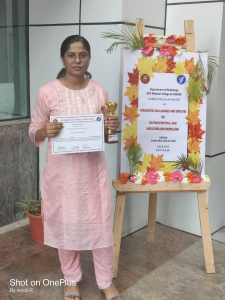
Department of Forensic Medicine and Toxicology at Vydehi is fully tuned to the study, application and subsequently judicious use of all the areas of medical and human body knowledge primarily aimed at assisting the law. Generally this requires a dedicated team of skilled personnel in carrying out routine services of autopsy, clinical cases examinations followed by proper reporting and dealing with any other medicolegal matter where opinion is sought by the investigating agency which is the Police Force in India.
Side by side with this there are educational programmes at undergraduate and post graduate levels, wherein a detail curricular teaching consisting of both theoretical and practical aspects are routinely done. Forensic Medicine, Forensic Pathology, Medical & Health Ethics, introduction to Legal aspects of medical care, Toxicology are major areas of teaching for MBBS in this department.. MD in Forensic Medicine and Toxicology course at the post-graduate level is also undertaken. All courses presently available and likely to be developed in future are/would be – as per National Medical Council and Medical Council of India directives and affiliated to Rajiv Gandhi University of Health Sciences.

Professor & HOD

Professor

Associate Professor

Assistant professor

Assistant professor

Senior Resident

Senior Resident

Senior Resident

Tutor

Tutor

Tutor

Tutor

Tutor

Tutor

Tutor
Housed in the medical college building of Vydehi Medical Institute all physical requirements consisting of office room, record keeping facility, offices for personnel, library, museum, research laboratory and mortuary are all available. Classrooms and lecture theatres with audio-visual facility are shared.
The department has adequate, modern equipment and teaching/learning aids available for autopsy work, embalming & storage of dead bodies, teaching/learning activities as well as for research work.
The Mortuary consists of a 1000 Sq. meter area which has:
The Research Laboratory consists of all general instruments for preservation, processing of tissues. It also has an Autoclave, hot air oven, water bath, and microscopes.
The Department has a collection of more than 600 plus bones, X ray plates, osteometric boards & other tools for MBBS /PG teaching.
There has been a slow and steady increase in the autopsies conducted. The number of autopsies conducted in the year 2011 is 193, in 2012 is 233, in 2013 is 251, in 2014 is 291, in 2015 is 274, in 2016 is 264, in 2017 is 333, in 2018 is 443, in 2019 is 485, in 2020 is 487, in 2021 is 401, in 2022 is 372, in 2023 is 384, in 2024 is 178 till date (may end).
A special area is assigned to the Clinical Forensic Medicine in the Department. Approximately 20-40 cases are handled yearly. Clinical Forensic medical cases conducted in the year 2016 are 19, in 2017 are 19. In the year 2018- 22 cases, in the year 2019-40 cases, in the year 2020-22 cases, in the year 2021- 20 cases, in the year 2022- 34 cases, in the year 2023-36cases, in the year 2024-14 cases till date (may end).
The department also conducts Clinical Forensic work like. Age estimation, examination of Sexual assault cases, DNA sample collection as required by the police / Court is examined. Advice is given to EMD staff and CMOs as and when required in medicolegal cases of RTA, Assault, Poisoning, Fall, Work Place injury, Burns, Electrocution, Rape / Sexual assault, Hanging, Kidnap, Drunkenness, Others
The Institution regularly organizes seminars, debates, guest lectures and visits to the crime scenes.
In 2019 a mock court room was started. It has all the necessary facilities for practicing a court room session. The walls also have informative charts regarding the same
There is a department library housed in the first floor. Museum in practical hall is also there in addition to the centralized museum,
Osteometric board, view box, callipers, microscopes are there for practical exercises
Live streamed Video demonstration of autopsy is there which is possible to be viewed from the practical hall.
The mortuary also handles storage of Non MLC dead bodies including embalming services. Cold storage facility is extended even to outside hospital deaths subject to availability of cold storage units. During Covid Pandemic department handled / coordinated all the Covid deaths for cold storage, relatives viewing, cremation / burial through BBMP and revenue authorities both within the State and outside the State.
The museum at the Forensic Department houses the following
The Forensic Medicine Museum consists of more than 500 photographs , charts , more than 200 wet specimens , bones/skeletons , clay models & various toxicology specimens as well as firearm specimens and weapons . These are all arranged in jars, glass cases & cupboards.
25 sets of catalogues available for students and faculty to refer
SPECIMENS | No. |
Infanticide | 18 |
Brain | 16 |
Heart with Aorta | 04 |
Liver | 20 |
Spleen | 05 |
Face Part | 01 |
Sternum | 04 |
Neck Structures | 05 |
Degloving Hand | 02 |
Mummified Foetus | 10 |
Heart | 14 |
Lungs | 15 |
Kidney | 08 |
Uterus | 06 |
Stomach | 04 |
Trachea with soot | 01 |
Umbilical cord | 01 |
Skin with tattoo | 03 |
BONES | Non-Human – one complete set of Monkey Skeleton, Two complete sets Human of human skeleton |
Whole Skull | 11 |
Mandible | 14 |
Sternum | 07 |
Humerus | 24 |
Ulna | 15 |
Sacrum | 14 |
Tibia | 18 |
Patella | 13 |
Skull Vault | 14 |
Clavicle | 20 |
Scapula | 16 |
Radius | 15 |
Hip Bone | 24 |
Femur | 32 |
Fibula | 16 |
Vertebra | 118 |
Ribs/ Tarsals / Carpals/ Metacarpal / Metatarsal / Phalanges | 300 |
WEAPONS |
|
Rifle | 1 |
Pellets | 8 |
Sharp Cutting light weapons | 12 |
Pistol | 2 |
Blunt weapons | 7 |
Cartridges | 7 |
Ligature Material | 7 |
Sharp cutting heavy weapons | 6 |
POISONS |
|
Vegetable poisons | 22 |
Metals | 10 |
Alcohols | 14 |
Animal | 19 |
Agricultural | 04 |
(Snake – 11, Scorpion – 6, Bee – 1, Bat – 1) | 19 |
CHARTS/DIAGRAMS |
|
Charts | 105 |
Diagram | 10 |
MODELS |
|
Miscellaneous | 5 |
PHOTOGRAPHS |
|
Autopsy Procedures | 27 |
Starvation Deaths | 03 |
Identification | 99 |
Ethics / Negligence | 05 |
Road Traffic Injuries | 33 |
Thermal Injuries | 38 |
Drowning | 06 |
Weapons | 41 |
Full case profile mounted on felt boards | 21 |
Infanticide | 21 |
Artefacts | 07 |
Asphyxial Deaths | 44 |
Toxicology | 106 |
Homicidal Injuries | 27 |
Mechanical Injuries | 108 |
PM Changes | 75 |
Snakes | 09 |
X-RAY PLATES |
|
Skull with jaw | 31 |
Elbow Joint | 22 |
Hip Joint | 09 |
Ankle Joint with foot | 10 |
Sternum | 02 |
Shoulder Joint | 08 |
Wrist | 20 |
Knee | 12 |
Clavicle | 07 |
Miscellaneous | 23 |
| Sl No | Name and authorship | Title | National/ state | Indexing | Citation | Year |
|---|---|---|---|---|---|---|
| 1 | Dr Jagadeesh N (Fifth author) | Do we need an overhaul of the Anatomy Acts in India? | State | Index Copernicus Open J Gate Research bib | JKAMLS 2023;32(1):44-48 | 2023 |
| 2 | Dr Karen Harshitha ( 2nd and Corresponding ) | Pattern of mortality among adolescent suicides in Victoria Hospital Mortuary | National | Google Scholar CINAHL EBSCO host( USA) Embase | Indian Journal of Forensic Medical and Toxicology • Vol. 17 No. 1 (2023) Page no.61-65 | 2023 |
| 3 | Jagadeesh N (Second author) | Competency based or competency driven medical education in forensic medicine: crossroads and way forwards | National | EMBASE SCOPUS Google Scholar CNKI Scholar EBSCO Discovery Indian Citation Index | Journal of Forensic Medicine and Toxicology. Jan- June 2022.39(1) 1-4 Issn: 09711929 | 2022 |
| 4 | Dr Karen Harshitha ( 1st and Corresponding) | Social psychological profile of pattern of female burn causalities | International | DOAJ SCOPUS Google Scholar Naver Emerging Sources Citation index | Egyptian Journal of Forensic Science • Article number: 61 (2022) | 2022 |
| 5 | Padmini Hannah Noone (First author) | Factors affecting natural illness during the Covid-19 pandemic- autopsy findings in a series of cases | National | EMBASE(Scopus) Indian Scholar EBSCO CINAHL Google Scholar Indian Citation Index Copernicus | Indian Journal of Forensic Medicine and Toxicology Vol (15) April 2021 Issn: 0973-9130 | 2021 |
The department teaches students of the following disciplines:
MBBS
MD Forensic Medicine
Electives in MBBS internship
Electives for Forensic Students
Safety skills for school students
Modified time table and curriculum is being followed as per the New CBME guidelines. AETCOM sessions of second year and whenever required in other years are also there. Electives in the department is being planned for interested students.
VIDA – Ultra Modern Museum using a blend of E-Platform & Regular specimens, Weapons, Charts & Photographs along with other exhibits. There are both E-Catalogues as well as hard copies for ready reference.
The museum contains HD displays, audio visual exhibits & computerized software driven facility for students and other visitors.
Wet Specimens 331; Dry specimens 150; Wax Models 5; Poisons 140; Charts 105; Photographs 662; Models 5; Slides 20; Weapons; 50 Portraits 5; Case history photographs 6; X-rays 144 & Bones 671.
Located at basement with external entry and internal entry consisting of 1000 sq. meters of well lighted ventilated and having properly equipped instruments is used for storing dead bodies, carrying out regular autopsy work with student demonstration as needed. At any given time, adequate cold storage for dead bodies, four operating tables and adequate waiting area for police and relatives are there. Side labs for screening for alcohol and pesticides are provided. We carry out embalming and storage of dead bodies also. Total autopsies in year 2011 is 193, in 2012 is 233, in 2013 is 251, in 2014 is 291, in 2015 is 274, in 2016 is 264, in 2017 is 333, in 2018 is 443, in 2019 is 485, in 2020 is 487, in 2021 is 401, in 2022 is 372, in 2023 is 384 in 2024 is 178 till date (may end).
First rank MD Forensic Medicine-Dr Fairoz Khan 2011
Second rank MD Forensic Medicine -Dr Shobhana SS 2013
First rank MD Forensic Medicine-Dr Madhusudhan Reddy 2017
DNB Forensic Medicine Gold medal Dr Karen Harshitha 2023
3ranks in Forensic Medicine UG exam results announced by RGUHS in the year 2024
-Karthika S Gowda 4th rank
Keerthi Raj V 8th rank
Hazel Ivana D’Souza 10th rank
Achievements
100% result in 3rd yr university examination in the year 2024
Dr Jagadeesh N- Achievements
MBA in Healthcare management in 2021
Associate Editor, Indian Journal of Legal Medicine 2024
Dr Fairoz Khan- Achievements
Former executive committee member SIMLA 2017
Dr Karen Harshitha – Achievements
PGDHRL from NLS obtained in 2024
Participation in world patient safety week conducted during the period 17 Sep to 25 September 2023 for the 3rd year students.
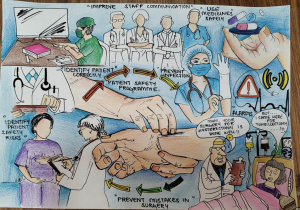
One of the posters made by students

Winners of the poster and slogan contest
CME on Engendering medical education and clinical practice conducted by the Dept of Forensic Medicine, VIMS and RC along with CEHAT Mumbai, April 18,19 2024
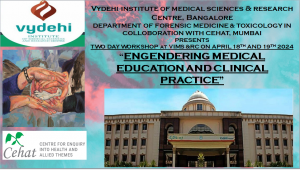
Accredited by National Accreditation Board for Hospitals (NABH)
The Community Medicine Department trains the undergraduate and postgraduate students in the science and art of preventing disease, prolonging life and promoting health and efficiency through organized community. The main goal of the Department of Community Medicine is to provide community oriented health care education blended with research, leadership and management, and thereby prepare medical students to function as community and primary care physicians. The main values inculcated among the students are (i) Community orientation, (ii) Community participation, (iii) Human and cost effective health care, (iv) Ethically driven primary health care, (v) Inter-sectoral co-ordination in health care, and (v) Research with ethical and moral values.
To move towards the achievement of these goals, the department conducts many programs.
It provides Undergraduate Training and Post Graduate Training. It offers health services at Rural health Training Centre / Primary Health Centre situated at Kannamangala, field practice areas; and the Urban Health Training Centre. It extends its health services by holding screening, school health appraisal services, family health services and Outreach health education sessions on issues of public health importance in the field practice areas and the nearby areas and also participates in various national programmes and important Health Days. The Department has to its credit excellent infrastructure, good facilities, a good research background coupled with trained and highly qualified manpower. The students who go through this course during their tenure at VIMS & RC are placed to learn and practice Primary health care at the Urban and Rural Health Centres in the field practice areas. During their internship period, the students work in various places like RHTC / UHTC/ CHC and General Hospitals for 12 weeks period.

Professor & HOD

Professor

Professor

Associate professor

Associate professor

Associate professor

Assistant professor

Assistant professor

Assistant professor

Assistant professor

Senior Resident

Senior Resident

Senior Resident

Statistician

Senior Resident

Tutor

Tutor

Tutor

Tutor

Tutor

Tutor
The department has an Urban Health Training Centre at Lake side hospital, which caters to surrounding slums covering a population of about 15155. The centre provides free out patient service and free drug distribution. Patients needing inpatient care are referred to Vydehi Institute of Medical Sciences & Research Centre Hospital. Regular health checkup and Health education camps are also conducted by the department.
The main Rural Health Training Centre is situated at Kannamangala. This comes under Avalahalli CHC. It caters to a population of 97740. The services provided at RHTC include 24 hours outpatient care and inpatient care with delivery facilities. The centre has also implemented the various National Health Programmes in this area.
The Specialists services provided from Vydehi Institute of Medical Sciences and Research Centre at RHTC include General Medicine, General Surgery, Obstetrics & Gynaecology, Paediatrics, ENT, Ophthalmology, Orthopaedics, Pulmonology, Psychiatry, Dermatology, Endocrinology, and Dentistry, which are provided on week days . There is additional Primary Health Centre in Handenahalli catering to a population of 40,460 respectively. The Interns, Undergraduate and Post graduates students together with the faculty, Health Inspectors and Social workers provide comprehensive health care to the community at these field practice areas.
Patients from Rural Health Centres who require Tertiary Care are referred to Vydehi Institute of Medical Sciences and Research Centre Hospital for further treatment. Cataract surgeries are conducted free for people from the rural community and urban slums.
Specialist Health Camps: Specialist health camps are conducted on a regular basis in the surrounding villages and urban slums of the college. A total of 114 camps have been conducted in the past year and over 7000 people have been screened for health problems at these camps. Patients requiring further treatment are referred and treated for free at Vydehi Institute of Medical Sciences & Research Centre.
School Health Appraisal Programme: The department conducts regular school health appraisal activities in the schools situated in the field practice areas, where all school children are evaluated for various health problems like visual abnormalities, vitamin deficiency, dental diseases, mental disorders and skin diseases.
DRP Programme: PG residents are posted for 3 months on rotation in General hospital. They are exposed to District Health System. They are involved in providing healthcare services.
The department runs a Statistical Cell to serve the Statistical needs and to enhance research activities in the Institution. It offers postgraduate and undergraduate teaching programme related to statistics to several health science courses.
The department uses the software IBM SPSS Statistics Version 21
An epidemiological unit is present in the hospital which focuses on the surveillance of communicable and non-communicable diseases, investigation of epidemics in the community and surveillance of water quality in the field practice area.
Regular immunization as well as Antenatal & Postnatal clinics is conducted in the Rural Health Training Centres and Urban Health Training Centre. Antenatal mothers receive monthly check-ups by obstetricians from Vydehi Institute of Medical Sciences and Research Centre. They are also given TT injections and IFA tablets at the RHTC.
Postnatal mothers are given check-ups by Interns and Postgraduates as well as by OBG Specialist. Those who completed their families are motivated for TO/LTO. The mothers who require spacing methods are motivated for IUCD, OCP or Conventional contraceptive methods.
Health check-up of under five children is being carried out regularly at the Anganwadis situated in the field practice area. These children are given treatment for Acute Respiratory Infections, Diarrhoea or other ailments at the Rural & Urban Health Centres. Those who require further investigation and management are referred to Vydehi Hospital.
Children who are undernourished are provided Nutrition supplementation and their mother’s receive Nutritional Education by the Interns, Postgraduates and Medico-Social workers. These children are regularly dewormed every 6 months. They are monitored closely for improvement in their nutritional status using Growth Chart.
| Sl no | Author 1st, 2nd and corresponding author | Title of paper | National or international | Citation of the journal | Indexing details | Date of publication | Pageno, vol,ISSN no |
|---|---|---|---|---|---|---|---|
| 1. | Dr Kalliguddi S, Dr Sharma S, Dr Chaitali Gore | Knowledge, attitude, and practice of breast self- examination amongst female IT professionals in Silicon Valley of India. | International | Family Med Prim Care | Pubmed | 2019 | Vol.8:568-72 ISSN:2249-4863 |
| 2. | Dr Preethika Palani, Dr Chaitali Gore, Dr Chaitali Gore | Eating Disorders and its Correlates among Medical Students in Bengaluru, India | National | Annals of Community Health | Doaj, index medicus | Jan-Mar 2020 | Vol.8(1):11-14 ISSN:2347-5455 |
| 3. | Dr Chaitali A Gore, Dr A. Gajare Rupali, | Mental Health Status of People of Maharashtra Due to Corona Virus Disease-19 Pandemic. | Natioial | IndiaAnnals of Community Health.Jan-Mar 2020;8(1):11-14. | Doaj, index medicus | Jul-Sep 2020 | Vol.8(3): 6-10 ISSN:2347-5455 |
| 4. | Dr Aparna Narayana Gollu, Dr Chaitali Gore | Knowledge, Awareness and Attitude of Medical Students Regarding HPV Infection and HPV Vaccination. | International | Asian Pac J Cancer Care | Doaj | 2021 | Vol.6 (1), 41-46 ISSN:2588-3682 |
| 5. | Gore CA, Mangala S, Ammar M. A | Study on feedback by undergraduate medical students for the foundation course under competency-based medical education: An institution-based cross-sectional study. | International | MRIMS J Health Sciences | Doaj | 2021 | Vol.9(4):164-8. |
| 6. | Prasad P, Gore C, Suresh S, R Pavan. | Prevalence of anaemia among female undergraduate medical students | International | Paripex – Indian journal of research | Index medicus | 2022 | Vol.11(10):15-7 |
| 7. | Shivalli S, Hondappagol A, Akshaya KM, Nirgude A, Varun N, Reddy RHR, Sharath BN | Does mobile phone instructional video demonstrating sputum expectoration improve the sputum sample quality and quantity in presumptive pulmonary TB cases? Protocol for a prospective pragmatic non-randomised controlled trial in Karnataka state, India; | International | BMJ Open | Scopus, the science citation index expanded., pubmed central, embase (excerpta medica), doaj and google scholar | 2020 | 10:e032991. doi:10.1136/bmjopen2019-032991 |
| 8. | Dr AmeyJoshi, Dr Raveendra H R Reddy, Dr Raveendra H R Reddy | The prevalence of stress, stressors and coping mechanisms and the socio-demographic factors associated among the auto-rickshaw drivers in Bengaluru city. | International | J Family Med Prim Care | Pubmed, scopus indxed, directory of open access journals, indian science abstracts | 13 October 2021 | 10:2546-51. https://www.jfmpc.com/text.asp?/10/7/2546/322751 |
| 9. | Tejashree A, Mahes PA, Karthik MK, Nirmala, Azeem A, Reddy RHR, Chengappa R, Burigina SN. . | Era of TB elimination: Growing need to understand diversities of Mycobacterium tuberculosis lineages! | National | Indian Journal of Tuberculosis | Ugc care. Scopus. Web of science (scie) | 2022 | Vol.69(1) :79-84 |
| 10. | Udaykumar P, Kumar Saurabh, Chandralekha N, Reddy RHR, Badarudeen MN, Burugina SN.., | Daily monitoring of diabetic treatment amongst TB-DM patients under NTEP: Does it improve the treatment outcomes? | .International | Clinical Epidemiology and Global Health | Scopus, web of science, emerging sources citation index, and embase | 2022 | Vol. 17, 101118 |
| 11. | Dr Lavadi R, Dr Mangala Subramanian, Dr Lavadi R | A study on internet addiction among among medical students in a tertiary care hospital in Bangalore, India | International | Int J Community Med Public Health | Index medicus for south east asia | 2021 | Vol.8: 2995-8 |
| 12. | Dr Indumathi K, Dr Mangalal Subramanian, | Effectiveness of Information Education Communication on Drug Compliance among hypertensives in rural field practice area of Vydehi Institute of Medical Sciences and Research Centre Bengaluru | National | Ann Community Health | Directory of open access journals | 2021 | Vol.9(1): 131-135. |
| 13. | Dr C Pradeep, Dr B M Nivedita, Dr B M Nivedita | A Study on Knowledge, Attitude and Practice of Medical Ethics among Interns and Post graduates in Medical College, Bengaluru.. | National | Paripex-Indian Journal of Research | Index copernicus, pubmed | May 2019 | Vol.8(5):22-23 |
| 14. | Dr Mayani Nivedta B, Dr Pradeep C, | A cross-sectional study on preference of tubectomy over vasectomy among eligible couples in Bengaluru, Karnataka. | International | Int J Community Med Public Health | Index copernicus, index medicus, pubmed | 2020 | Vol.7(1):269-273 |
| 15. | Dr C Pradeep, Dr B M Nivedita | An observational study on study skills among medical undergraduates, Bengaluru | National | Annals of Community Health | Directory of open access journals,index medicus | Sep 2021 | Vol.9(3):125-128 |
| 16. | Dr A Anurag, Dr M Shilpa, Dr Shilpa | Assessment of adherence to therapeutic regimen and lifestyle modification among patients with cardiovascular disease. | National | Annals of Community Health | Directory of open access journals,index medicus | March 2021 | 5455 eISSN 2341-5714 VOLUME 9 Pages: 244-47 |
| 17. | Dr S Hemavarneshwari, Dr Rizwana B Shaikh | Strategy to Sensitize Private Practitioners on RNTCP through Medico-Social Workers in Urban Field Practice Area of a Medical College in Bengaluru, Karnataka | National | Indian Journal of Tuberculosis. | Pubmed | Apr 2019 | Vol.66:253-258 |
| 18. | Hemavarneshwari, Snigdha R, Deeksha C,Chandana Hari, | Assessment of insomnia during COVID pandamic:A study among general population. | International | Int J of Dental and medical sciences Research | Pubmed Directory of open access journals | Oct 2022 | Vol.4(5):543-54 |
| 19. | Dr Vindhya. P, Dr Acharya S | Knowledge ,attitude and practices among diabetic patients visiting a tertiary care hospital in Bangalore, Karmataka | Internatioinal | Int J Community Med Public health | Index copernicus,index medicus | Aug 2020 | Vol.7(8):3100-4 |
| 20. | Dr Padmaja R Walvekar, Dr Bhuvana Gajula | A study on maternal body weight as a predictor od birth weight of newborn | Internatioinal | International Journal of community medicine and public health | Index copernicus,google scholar | sept-oct 2020 | Vol.6(4): 1360-1363 |
| 21. | Raghuveer P, Haleema M. | Perceived social support among pregnant women attending the antenatal clinic of a tertiary care hospital. | International | Index Copernicus, PubMed Central, SCOPUS, Web of Science, DOAJ | Journal of education and health promotion | 2023 | Vol.12(1):88 |
| 22. | Mandal A, Subramanian M Reddy SS, Gouda N | Elder Abuse and its association with mental well-being and the associated socio-demographic factors – A community based Cross-sectional study in Bengaluru, India | International | Index Copernicus,Google Scholar | Natl journal of community med | Oct.2023 | Vol.14(10): 635-42 |
| 23. | Nirgude AS, Haleema M. | Epidemiological Profile of Unintentional Childhood Injuries in Urban Area of Mangaluru Taluk, Dakshina Kannada District, Karnataka State, India | National | Scopus , Google scholar | National journal of community medicine. | 2024 February; | Vol. 15(2):121-126. |
| 24. | Nithya R, Harshappradha R, Haleema M, Chaitali G. | Opportunistic Screening for Hypertension and Obesity among Patients Attending a Tertiary Care Hospital in Bangalore, India | National | Google scholar, Index copernicus | India. J clin biomed sci | 2024 | Vol. 14(1): 8-12 |
| 25. | Acuth KS, Mangala Subramanian, Pradeep C | Prevalence of Prediabetes and its associated risk factors among people in rural field practice areaof VIMS &RC, Bangalore | International | Index Copernicus, Google Scholar | Int j community med public health | 2024 | Vol. 14(1):1-5 |
Undergraduate Training program
Training in Community Medicine begins from the very first year of MBBS and is a subject for all medical students till they finish their internship. The course is taught through theory classes, practical classes, small group discussions, Self-directed learning, Family Adoption Programme, Clinico -social case study, field visits, project work, seminars and tutorials. Importance is given to participatory learning. During family study and field visits, students are taken to the community where they interact with the people to try and understand their health issues at the grass root level and the factors that have contributed to the same
Specialist Health Camps
The college conducts specialist health camps on regular basis in its surrounding villages and urban slums. Fortnightly camps are conducted at Kannamangala, where in on an average 200 patients are seen by the specialists of various departments in each visit. These patients are given free treatment and referral cases are treated free of cost at Vydehi Hospital. Camps are also conducted in other villages covering radius of up to 30 kilometres.
Post Graduate teaching
Postgraduate teaching in Research Methodology and Biostatistics is provided to the post graduate students of the institution. Post graduate training in Community Medicine has started since June 2008. There are regular seminars, journal club meetings, case presentations and family health studies every week. The post graduates are also posted to the Rural Health Training centres and the Urban Health Training Centre and other peripheral postings. They are also involved in the planning and organization of the health camps, field visits, National and School health programmes.
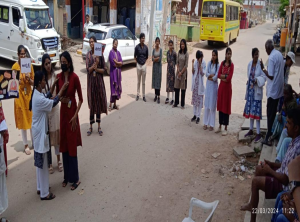 VIDA – Ultra Modern Museum using a blend of E-Platform & Regular specimens, Weapons, Charts & Photographs along with other exhibits. There are both E-Catalogues as well as hard copies for ready reference.
VIDA – Ultra Modern Museum using a blend of E-Platform & Regular specimens, Weapons, Charts & Photographs along with other exhibits. There are both E-Catalogues as well as hard copies for ready reference.
The museum contains HD displays, audio visual exhibits & computerized software driven facility for students and other visitors.
Wet Specimens 331; Dry specimens 150; Wax Models 5; Poisons 140; Charts 105; Photographs 662; Models 5; Slides 20; Weapons; 50 Portraits 5; Case history photographs 6; X-rays 144 & Bones 671.
PROJECTS COMPLETED
FUNDED
NON FUNDED (Post Graduates)
Awareness of Health insurance in a rural population of Bangalore, India. Dr.Indumathi K Guided by Dr Hajira Sabai
PROJECTS ONGOING (Post Graduates)
PROJECTS COMPLETED – NONFUNDED (Under graduates)
Kannamangala RHTC lab is Accreditated by National Accreditation Board for Testing and Calibration Laboratories (NABL)
